PODCAST: Ep. 87 - Rose of Versailles Vol. 1, by Riyoko Ikeda
God Save The Queen, We Mean It, Man.
Hey y’all! We’re catching up after a long vacation and we have SO MUCH on the way, March should be the best month yet for this Substack. Thanks for your patience and please enjoy a flurry of new content this week.
One of the great classic shojo manga is finally available in English, Riyoko Ikeda’s Rose of Versailles, and the Mangasplaining team dig in to see if it lives up to the decades of hype! Will Chip like this better than his last foray into the [manga] classics? You’ll have to listen to find out!
Listen and Subscribe to the Podcast: Google | Apple | Stitcher | RedCircle | Amazon | Radio Public | PocketCast | Spotify
THIS EPISODE:
00:01: Rose of Versailles, by Riyoko Ikeda
47:31: The Break
49:00: Shout-outs!
Rose of Versailles Volume 1
By Riyoko Ikeda
Translation by Mari Morimoto
Lettering and Touch Up by Jeannie Lee
Edited by Erica Friedman
Cover Design: Andy Tsang
Published by UDON Entertainment (Print only)
Audio Editing by David Brothers. Show notes by Christopher Butcher
Before we get started:
Hey y’all! Christopher here, and I’m just throwing these up online now because I’m so behind. All errors are my own, apologies in advance. But hey, we’re talking about Rose of Versailles, the great classic manga by Riyoko Ikeda! Here’s hoping the crew vibes with it more than in our last outing into ‘classic’ manga, eh?
Actually we reference it a bunch in the episode, so let’s talk about the fascinating biography of manga-ka Riyoko Ikeda. Here’s the official biography printed by UDON:
Riokyo Ikeda: Manga artist, author, essayist, vocalist. Started drawing graphic novels while enrolled at Tokyo University of Education (now University of Tsukuba), Department of Philosophy.
This work, The Rose of Versailles, which began serialization in Weekly Margaret in 1972, became the rage across near all of society, a smash-hit that was adapted for the stage by the Takarazuka Revue and into anime and feature films, crossing media barriers and changing the history of shojo manga.
Since then, she has continued drawing manga works based on her deep perception of history and humankind, and written essays and critiques full of insight, to the present day. Other representative works including Orpheus no Mado (The Window of Orpheus) which was awarded the 9th Japan Cartoonists Association Award in 1980, Eiko no Napolean – Eroika (Eroica – The Glory of Napolean), and Shotoku Taishi (Prince Shotoku).
Ms. Ikeda entered Tokyo College of Music, Voice Department, in 1995, and graduated the same institution in 1999. In 2006 she was active as a soprano in theatrical and musical performances.
In addition, her 4-panel color comic strip Berubara Kids (Rose of Versailles Kids) serialized in Asahi Shimbun Saturday edition, is drawing the interest of fans new and old.
Her Official webpage is
http://www.ikeda-riyoko-pro.com/
…so that’s the official bio, but man, there’s so much other interesting stuff there.
As David mentions (and supported extensively on Wikipedia) Ikeda created The Rose of Versailles as a story about revolution and populist uprising, after becoming involved with Japan’s ‘New Left’ as a member of the Communist Part of Japan in the late 1960s. At the time, shojo manga was sort of an afterthought in the market, not taken terribly seriously by authors or publishers, and Rose became the entire genre’s first major mainstream critical AND commercial success. You’ve really gotta read the Wikipedia to see just how pervasive the series became in Japanese culture in the 1970s, ESPECIALLY after it got an anime adaptation.
And yeah, the official bio mentions she entered the Tokyo College of Music, but after graduating she became a VERY popular singer, for musicals, operas, and even concerts dedicated to her! She even wrote a whole opera that was performed in Finland. At the end of the month she’s joining a talk at Kyoto University about Marie Antoinette. She’s a bit of a cultural force, on a different level than most of the creators we’ve covered.
Alright, all of that out of the way, let’s jump into the podcast!
01:00 Here’s what UDON has to say about The Rose of Versailles:
Oscar Frarncois de Jarjeyes is a young noblewoman raised as a son by her father. As commander of Marie Antoinette’s palace guard, Oscar is brought face-to-face with the luxury of King Louis XVI’s court at Versailles.Joined by her servant Andre, Oscar is privy to the intrigue and deceit of France’s last great royal regime.
The Rose of Versailles, the queen of shojo manga, is available for the first time in English! This deluxe hardcover volume contains the first 22 chapters of Riyoko lkeda’s historical fiction masterwork.
UDON Entertainment
02:00 Deb re-read it, Chip read it, and David read 400 pages. I read about 350 pages or so. I know that Chip makes an amazing joke along the lines of the dog eating my homework, but yeah, sometimes it’s nice NOT to force a read sometimes. Without putting too fine a point on it, I did actually rush through a few books on the podcast just to be done in time for the podcast, and man, I don’t know that I love how that worked out. So 2023 is me trying to take my time with things… AND also finish the assignment. As we can see from these shownotes being so late, well, it’s still in progress, but in my defence I’m in Canada for the first time in 6 months.
04:50 As mentioned in the introduction, Riyoko Ikeda was in the Communist Party at the time, and it really affected the tenor of these stories, particularly as they continued and Ikeda-sensei started to get more feedback from fans.
I think this manga totally stands on its own two feet, particularly if you read the whole first volume and see the way the story shifts in tone to be less about Marie and more about Oscar, but the Wikipedia was so UTTERLY illuminating that I’m glad I read it after reading this, highly recommended to anyone who dug this episode.
05:45 Early 90s Top Cow pages! What a reference! I’ve been on the internet way too long, but I remember people talking about the ‘manga’ influence on image comics, but I think the majority of those people were actually probably talking about anime, like Joe Mad’s whole deal (if we’re digging in).
Here are the examples that David is talking about. The characters floating on top of panels, overlapping and inset, everyone breaking panel borders, etc.
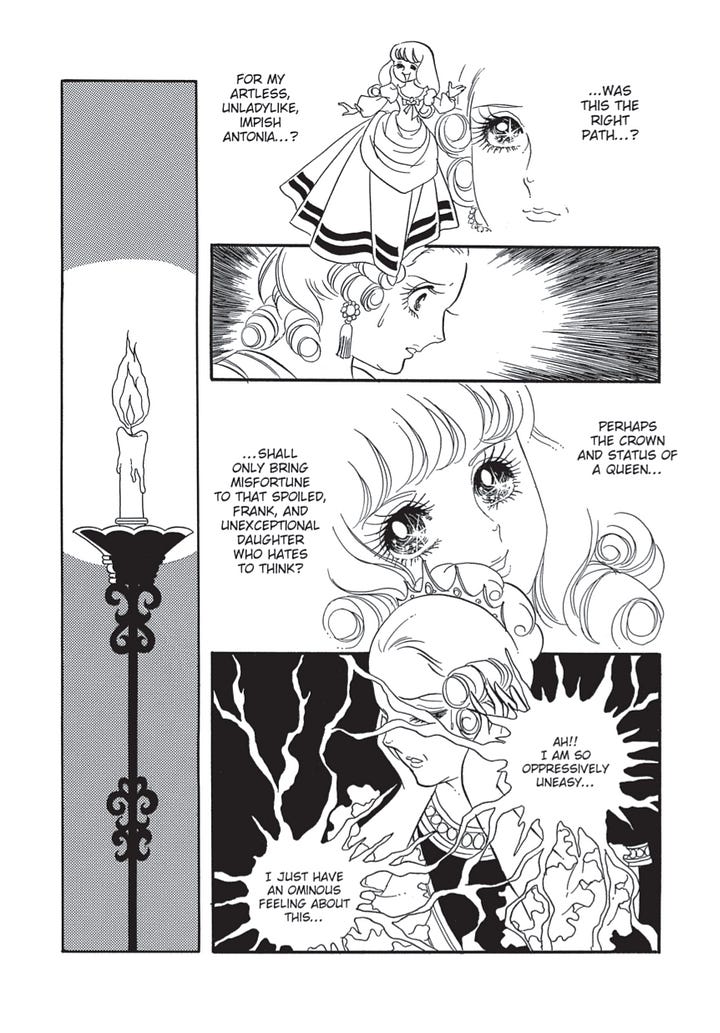
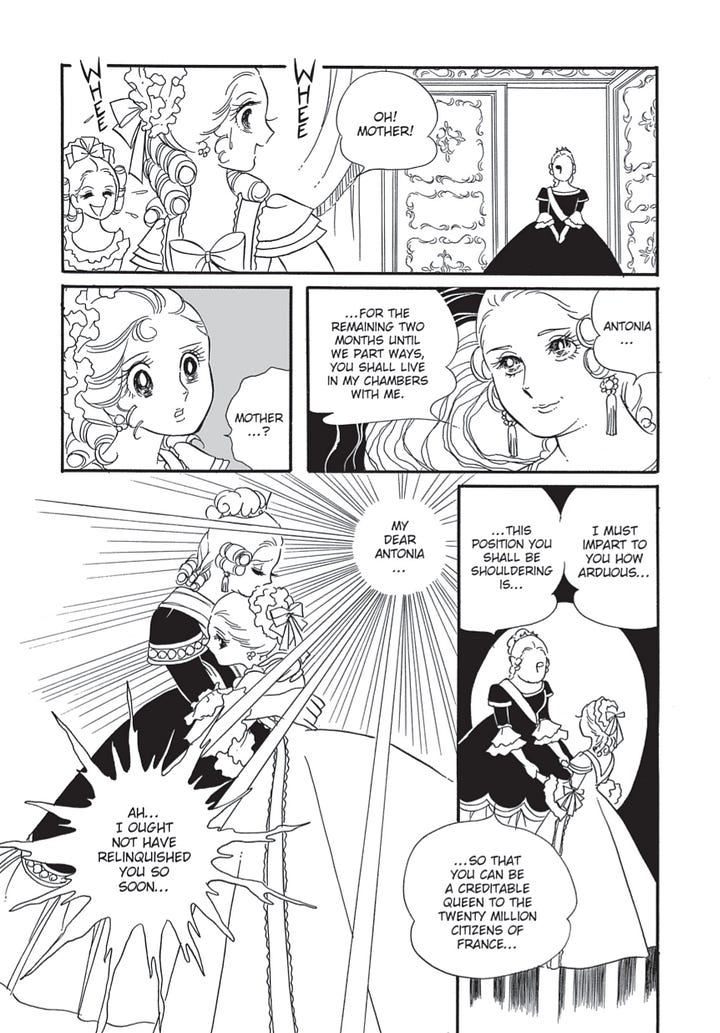
And here’s Top Cow Comics’ The Darkness #1 from Garth Ennis and Marc Silvestri in 1998. You can see there are some definite similarities, although the ling thin panel running top-to-bottom WAS more of a Liefeld thing.
I totally see the resemblance, honestly. That said, Rose is still SIGNIFICANTLY easier to read. Lol.
07:25 Rob has a lot of energy! No for real though. Here’s a couple pages from Prophet #1, 1994 I think? You can see what we’re talking about here, with long vertical panels that draw the eye all the way up and down, characters bursting out of backgrounds, inset panels used as design elements. I don’t love everything Rob’s done, and there’s no denying that a LOT of this was done as a short-cut to not having to draw more stuff, but man, the panel layouts here still look like they’re from the future.


08:52 There’s a lot of emotional storytelling in this series, with characters’ inner feelings depicted by the background art and designs (sort of like the ELECTRICITY! behind Prophet up there. Here’s an example of swirling black mist behind the characters in moments of dread or unease…
09:10 As Deb mentions, a single chapter of this was translated by Frederik L. Schodt in his 1986 book Manga Manga, one of the foundational texts of manga scholarship (and even basic explanation…) in English. This is a phenomenal book and one of the titles, along with Schodt’s Dreamland Japan, that set me on the road to being the otaku-adjacent lad that I am today. If you’ve been enjoying the podcast and you’re up for reading further about manga, I highly recommend this one. While the book is technically out of print, I was able to find new copies on Amazon at cover price or less pretty easily.

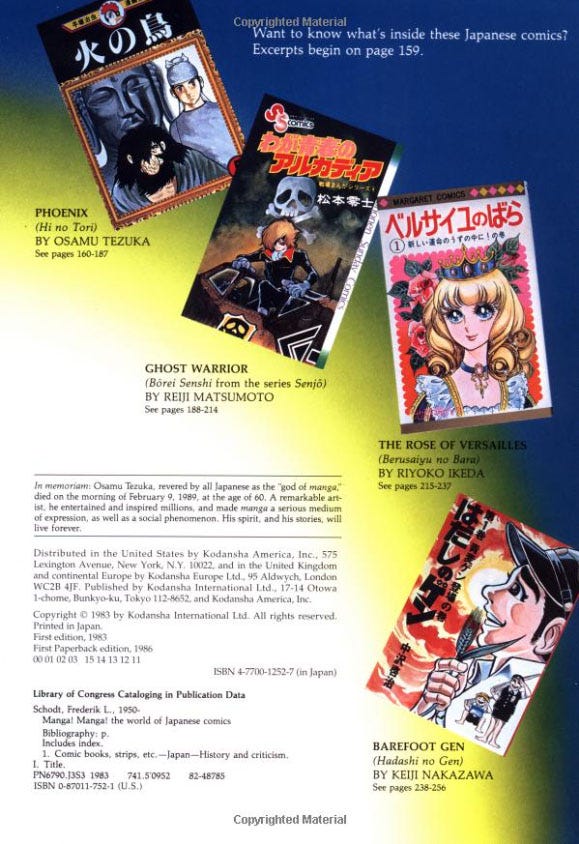
11:30 Deb nails it: The series starts as a retelling of the life of Marie Antoinette, but definitely becomes an Oscar book. According to Wikipedia Ikeda was getting a lot of feedback from the fans, rather than her editors, about the direction that the series should take. It led to things like the fan-insert character, the sweet and timid Rosalie, getting bounced out of the series as Oscar was a much more likable and relatable heroine!
Like, literally bounced out of the series.
Likewise, Marie was much less interesting as a spoiled and out-of-touch royal than the brave and noble Oscar, and the fans demanded more and more. Here’s that ominous portent I mentioned, but it was from the narrator and not from Oscar. For some reason I thought it was from them, or perhaps it is at a different point? Anyway, we’ll chalk this up to my faulty memory.
15:09 Spoilers: The kid getting shot? That’s a huge turning point in this first volume, and I think if you’re on the fence about all of the nobility and whatnot, this sequence (and how Oscar reacts and follows-up), not to mention the introduction of Robespiere, should tell you all you need to know about where this is going.
15:38 So yeah, the depiction of the King’s fate to smallpox is gruesome, especially in the context of this very, very pretty manga. Ikeda really pulled no punches with that one.
And here’s the sequence I mention, 40 Guards accompanied the King to his burial including Oscar, who is shown to mourn and be sensitive here.
16:30: Mangaka Riyoko Ikeda studied Versailles, the Terror, and French history for two years before embarking on the serialization of The Rose of Versailles. There are numerous real historical moments that are a part of this series, that really do show important scenes from the life of Marie Antoinette and French History. But of course, it’s a bit of historical fiction, full of invented characters that help bridge the gaps in the historical record. I don’t think it’s doing anything that any other piece of historical fiction hasn’t, at least in that regard, but yeah, don’t use this manga to talk about The Terror down at the salon, as Chip might have.
That said, there ARE actual adaptations of the life of Marie Antoinette in Manga form, although not yet translated into English. Here’s the Shueisha biography of Marie Antoinette, next to its French translation.
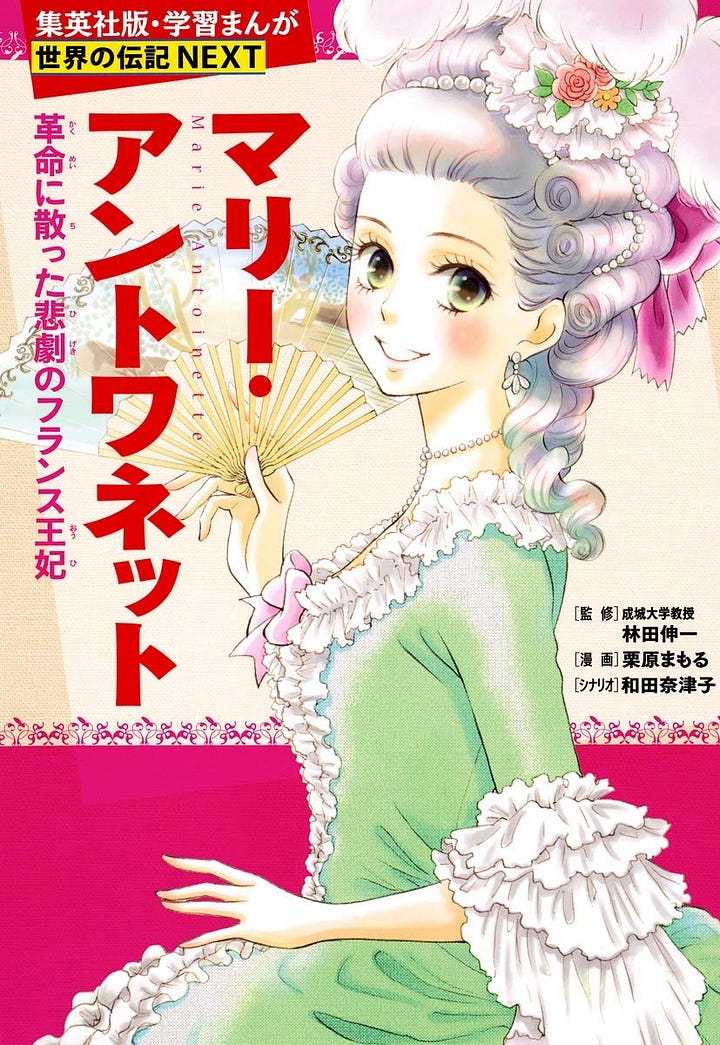
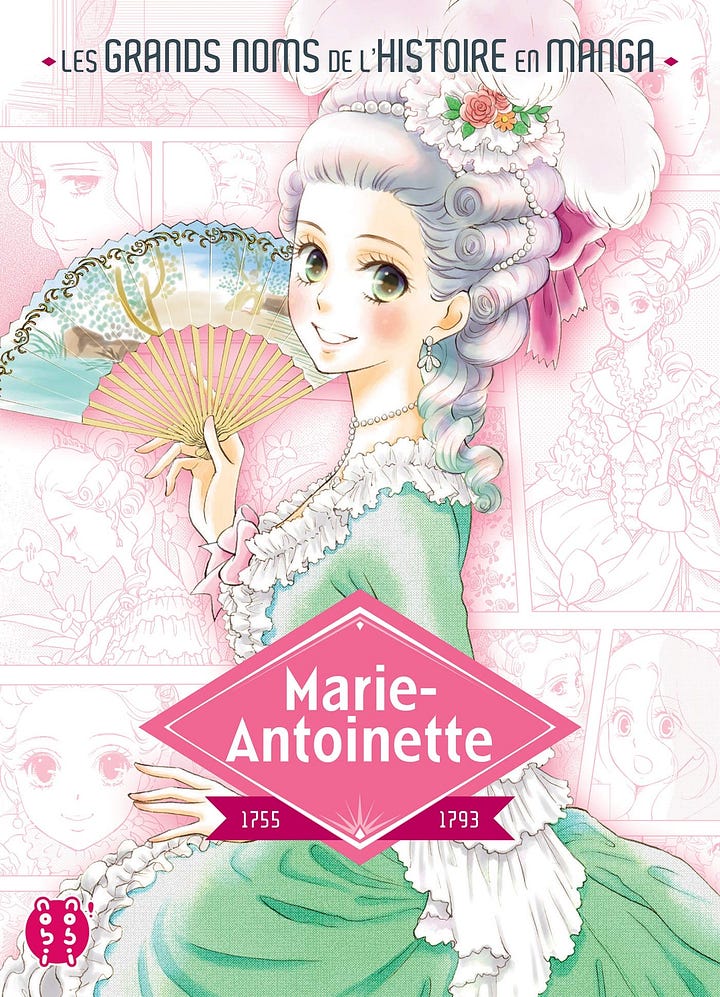
Edit: It’s kind of funny, this episode’s show notes took so long I already had feedback from a friend who was like “So why was historical fiction so vexxing to you guys, it’s a well-established genre?” and I had no retort. Lol.
19:10 Yeah, the whole handling of the role of Countess du Berry as the King’s mistress is really interesting, because it’s simultaneously portrayed as just and good, but at the same time intensely problematic and almost causes a war. In the 1970s the women’s liberation movement was changing some of the stigma around sex work, and honestly it’s not clear how Ikeda-sensei intends this section to be read, this ‘rivalry’, as even Marie’s mother realises her error, and yet, there’s nothing anyone can do because they’re trapped by their upbringing, by their station, by their choices.
Also, just to reaffirm: Sex work is work, it should be decriminalized, full stop.
22:30: Meanwhile, back to the art (which I love!), while the dresses and filigree and and whatnot are all beautiful, we LOVE the slapstick touches, the cartooniness, that propels the narrative. Here’s an example of the Looney Tunes spinning legs:
Here’s some great abstracting with rough outlines from page 394:
And here’s some full-on “I can’t believe this shit” slapstick from page 395:
24:50 Deb’s partly-remembered quote “I’m here to chew bubblegum and kick ass, and I’m all out of Bubblegum.” comes of course from the mouth of “Rowdy” Roddy Piper in the truly phenomenal, hyperviolent cult-classic film They Live.
I can’t believe our episode on The Rose of Versailles references Mid-90s Top Cow comics and They Live. It’s… It’s pretty great.
25:15 Much like Tezuka inventing shojo manga back in the day, in the 1940s the all-star duo of Joe Simon and Jack Kirby invented romance comics with Young Romance at DC Comics. I’m probably a little hard on them here, I actually love Romance comics and there are some solid stories in there, but a lot of weird missteps and Kirby’s art doesn’t always fully mesh with the subject matter. If I’m remembering correctly, there’s a story in Young Romance #1 where you see through the eye-holes of character, from inside their head, that’s really… Weird. Very Weird. Can’t find a sample online and too cheap for DC Comics’ app, so instead check out this review of the Simon & Kirby Young Romance collection by Kayleigh Hearn over at WWAC.
26:00: The ¾ overhead of Oscar seeing Marie, where he’s just like “What other panels? I don’t care, I will stand directly on them.” But it’s such a striking, beautiful page.
26:25: The drawing of Madame Duberry where she is drawn realistically, but her face is cartoony and extreme, with fire in the background, shows off another really solid cartooning trick that Ikeda-sensei employs, and it really works phenomenally throughout.
29:30: I also went to see that event, and it was really… complicated. They had a photo policy that was very strange and inconsistent, including not allowing photos in the gift-shop, if merchandise. In fact I was taking a photo of the _outside_ of the gift shop to show it was busy, and a guy ran out with his arms in an X in front of him and blocked me, it was… fucking bizarre. Anyway, here’s the photo of the display case with the different international editions, UDON’s is fifth from the left. This photo may or may not be illegal, so if I die under mysterious circumstances, take it up with the Roppongi Hills staff.
30:30 It’s true, that Ikeda-sensei’s work gets much more confident, emotive, and (dare-I-say-it) mature as the series progresses. While I don’t have any pages on hand from Volume 4, which features the Reign of Terror, this page from near the end of Volume 3 is really superb.
31:30 The film I was thinking of directed by Sofia Copola is just called Marie Antoinette, not sure why I thought it had a different name. Anyway, I dug it, here’s the trailer.
36:00 More on the Prince archetype! As mentioned previously, we first encountered the Prince archetype in Monthly Girls Nozaki-Kun, the comedy about shojo manga we covered (you can find it in the search bar, hotlinking is a bit tough right now). Well that prince archetype, this book is actually one of the originators of the archetype, alongside the actual origin in Osamu Tezuka’s Princess Knight. We actually just encountered this on recent episode, Even Though We’re Adults Volume 2 directly references it even! Look at us, recognizing stuff from episode to episode.
40:50 Deb’s really smart about this, it is an important work and I’m so personally glad that everyone loved it. One of the questions I meant to ask Chip and forgot to, was to ask him how he felt this classic manga compared to some of the other classics that we read, like Kamen Rider or Devilman. But then I realized I’m allowed to talk to him NOT during the podcast! So, uh, I just asked him:
I think it just felt like there was more thought put into it. Like the author wasn’t treating it as disposable entertainment.
Like, Devilman and Kamen Rider were fun, but it just felt like every few pages they were like “okay what next?”
Chip Zdarsky
There you have it!
42:20 Here’s we’re talking about sketchy anger lines around characters, meant to really visually differentiate the characters from their surroundings (who are all drawn so deliberately ‘cleanly’ that the scratchy, thick lines really make the characters pop). I couldn’t find the specific example of Oscar David mentioned, but here’s two examples to show what we mean.
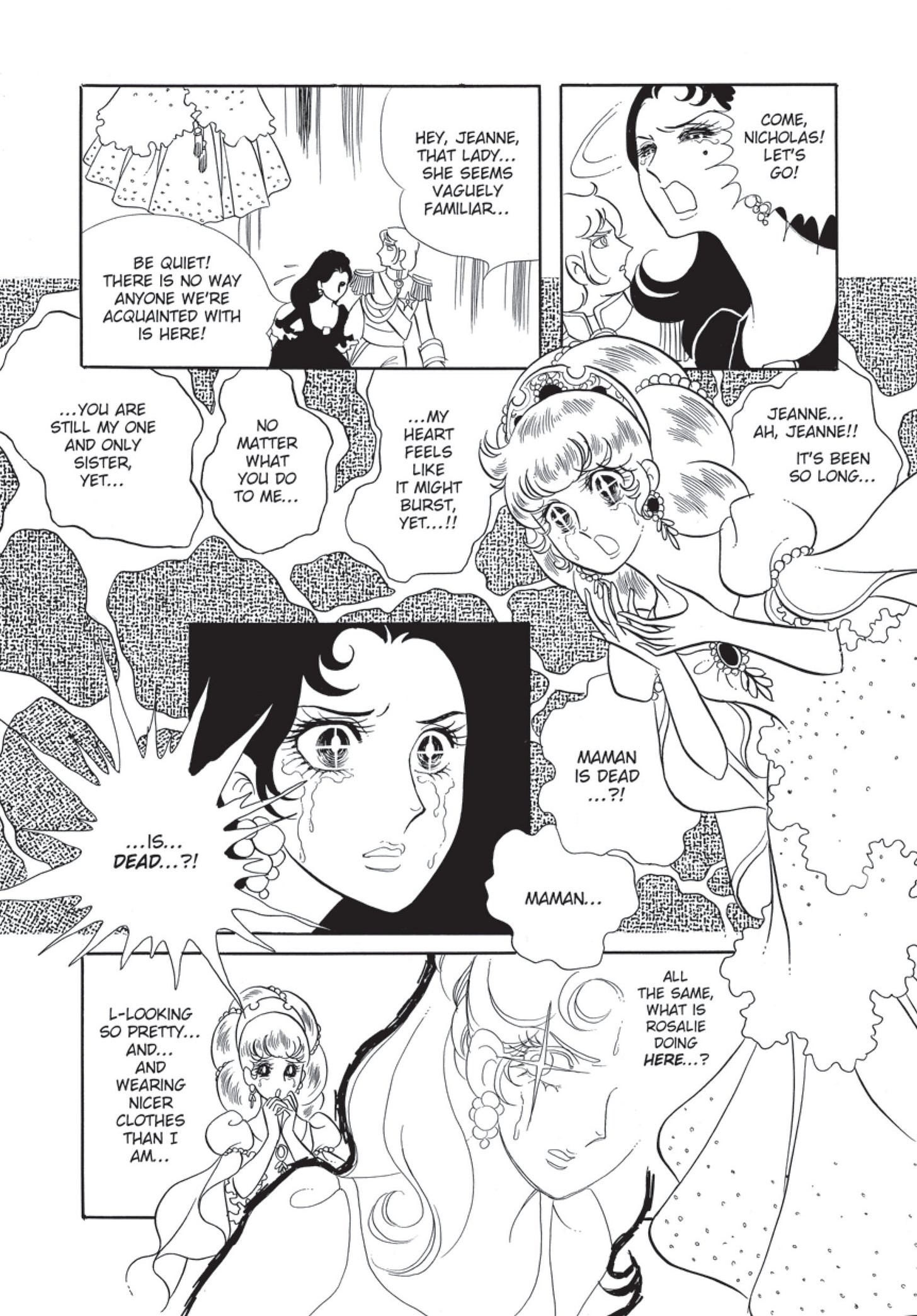
Using a similar technique, David mentions Marvel Comics artist Rod Reis and his work on New Mutants, with characters getting chunky outlines. I gotta be honest, I don’t really see it, maybe I’m not finding the right panels or images? But the work is really nice. Check it out:
45:00 While we’re obviously biased, working with UDON, I have to say that their edition of The Rose of Versailles might just be one of the nicest manga editions I’ve ever seen. Hardcover, glossy paper, all color pages reproduced in color, a very beautiful cover treatment, tons and tons of bonus material, honestly this is a truly immaculate collection of manga. I’m sure there are nitpicks though that I haven’t seen, but I’ve seen the ‘fancy’ versions of this material here in Japan and, to my eyes, the UDON editions are better.
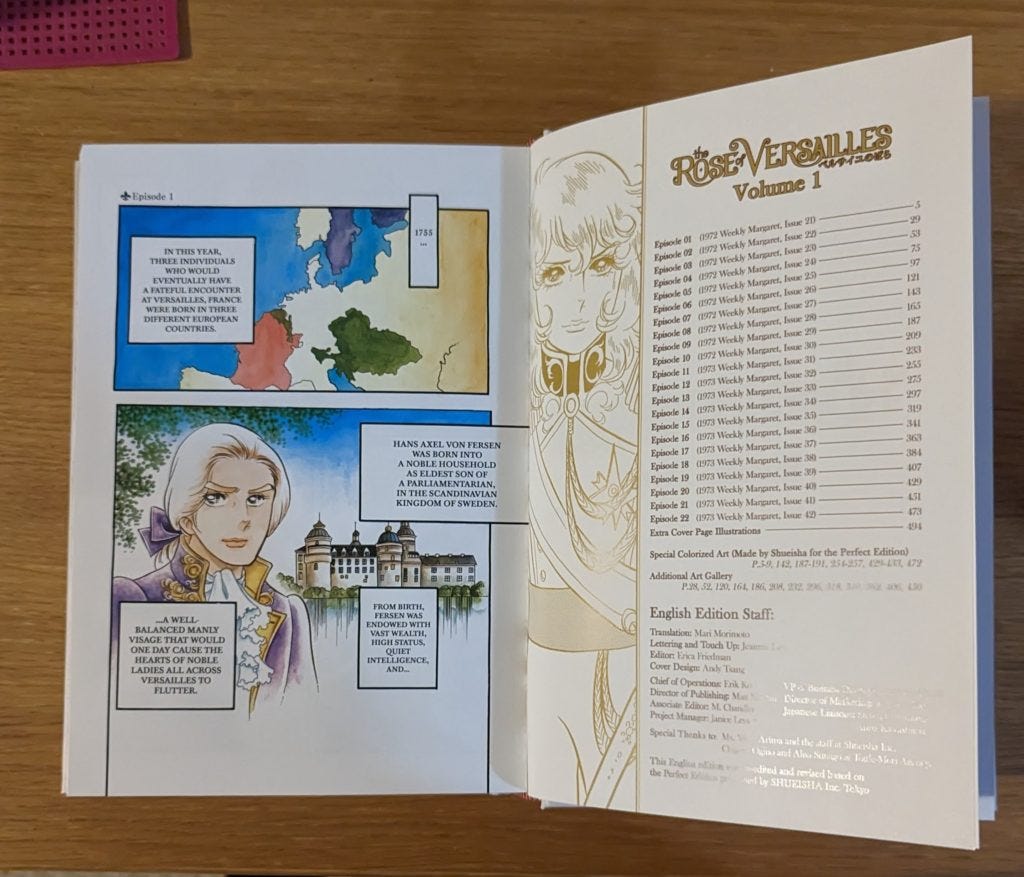
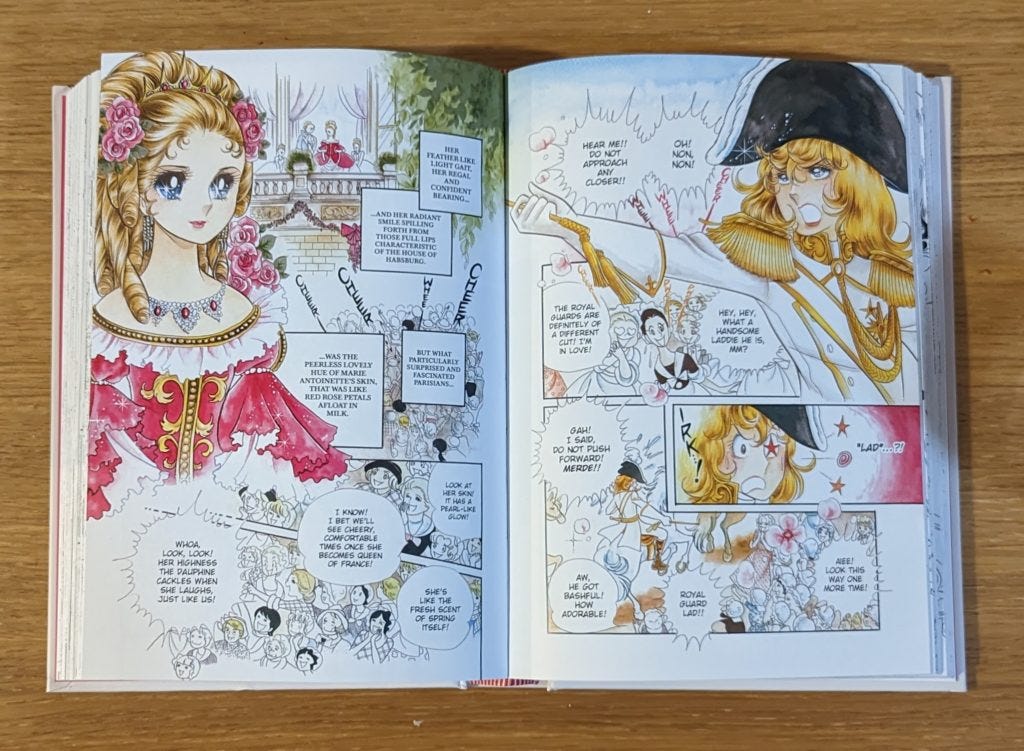
And that, finally, takes us to the end of this episode on Rose of Versailles. Sorry it took so long to get out, thanks for reading! Shout-outs after the break.
47:31: THE BREAK
Alright, now it’s time for SHOUT-OUTS!
Not quite a shout-out to start, because David mentioned this Lupin III– and Marie Antoinette-themed production at The Takarazuka Revue, and then we include it here. He explains it in a way that makes it sound really fascinating, and having been to the Takarazuka Revue live in person one time I agree that it is an absolutely unique and incredible experience that everyone should see once, even if they don’t understand Japanese. But for now, if you want to see what David is talking about, you can check out the Takarazuka Revue Wikipedia, or this video:
Then, this week Deb shouts-out the new Minami Q-ta release from Starfruit Books, Not All Girls Are Stupid. As you remember we read Q-ta’s short “The Blood Red Boy” here on the podcast many moons ago, and this full-length release looks pretty darned good. A future Mangasplaining pick? We’ll see!
Deb and I met Minami Q-Ta at Comitia a few months ago! She was so nice and we bought her doujinshi. She was even kind enough to pose with our postcard, lol. Anyway, yeah, go buy her new book (and her previous ones!) from Starfruit.
Chip recommends the book Less by Andrew Sean Greer, it won the Pulitzer Prize! He also just read and really enjoyed the book’s sequel, Less is Lost. Christopher was SUPPOSED to read those for gay book club in Taipei, but as we find out on a later episode, he never did, because he was too busy travelling in Taiwan to attend book club. Sort of like why this episode’s show notes were so late.
Despite the lateness of this episode (and the next one…) Christopher recommends that you hit the road, jack. Why he’s sitting in a Japanese Denny’s right now, finishing these notes (and getting started on the next ones).
And that’s this week in Mangasplaining! This episode is also available wherever you get your podcasts, so please subscribe and leave a review, so others can discover our show.
Also: Thanks for subscribing to these show notes! Please tell your friends and stuff too!
Next week on Mangasplaining:
Get ready for UNDER NINJA by Kengo Hanazawa. Except the episode is already out! Wherever you get your podcasts! Show Notes Soon!
Thanks so much for listening! Please support your local comic and manga specialty shop when purchasing these books, and you can find one near you at comicshoplocator.com. You can also check your local library for print and digital lending options, they have TONS of manga! Finally, thanks to D.A.D.S. for their musical accompaniment for this episode.




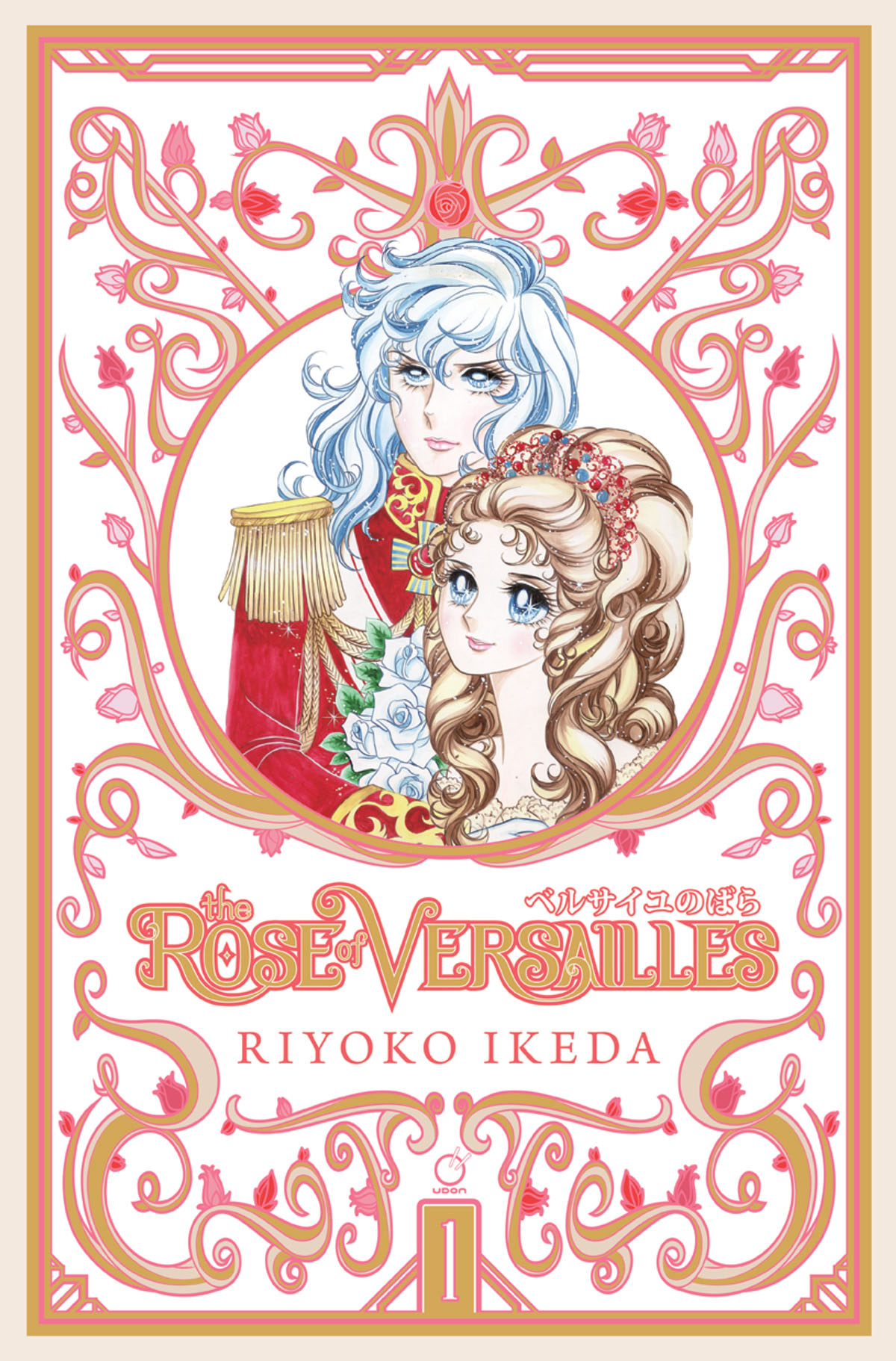

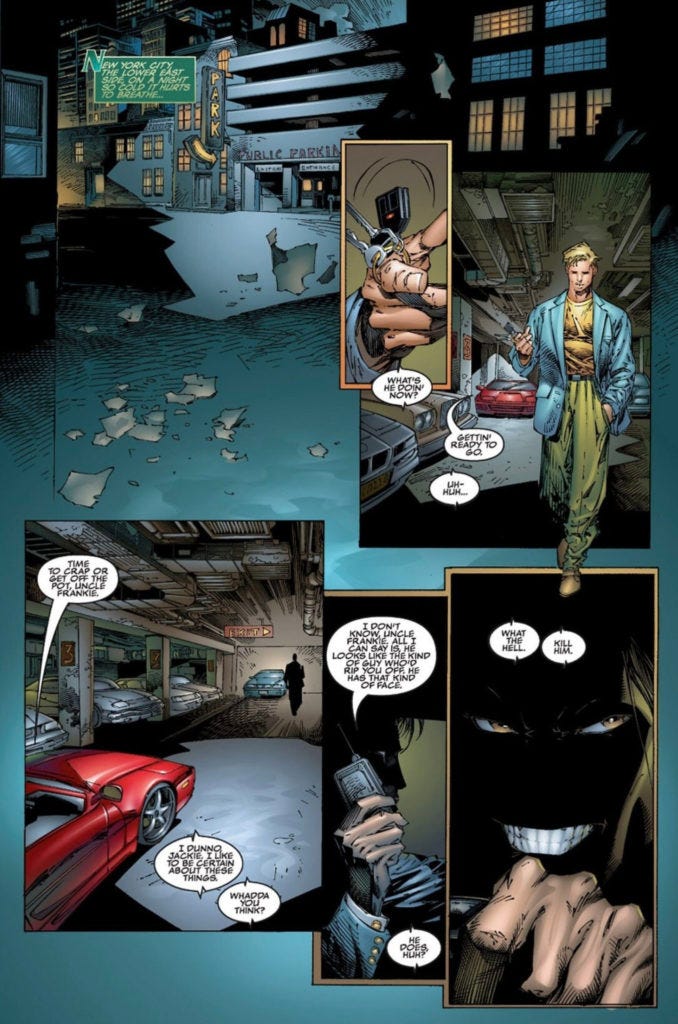
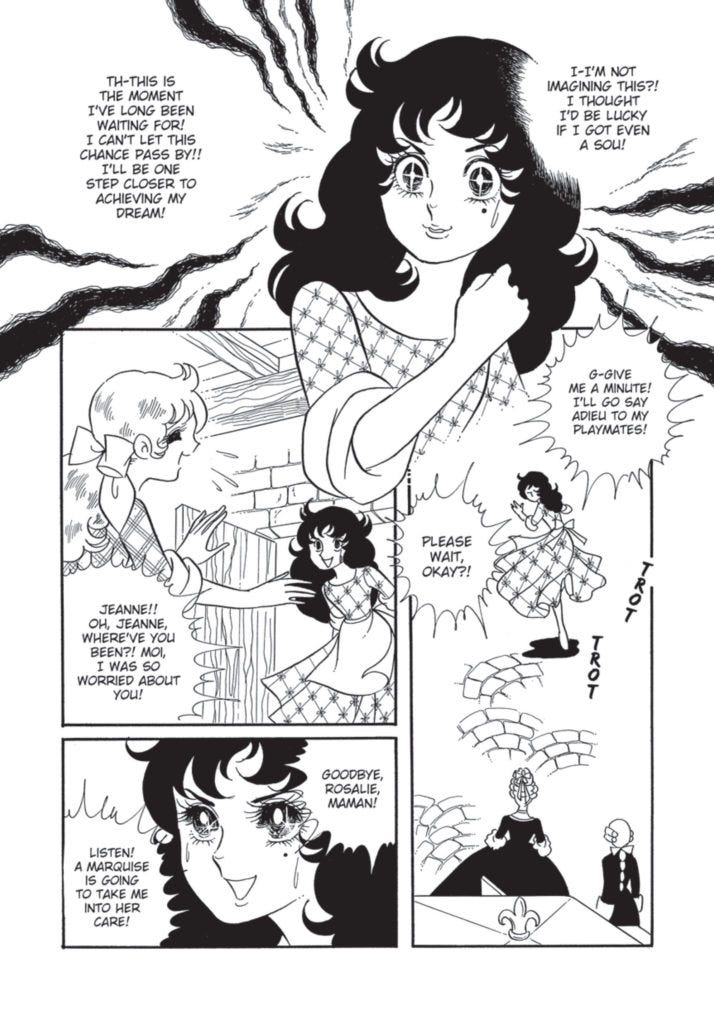
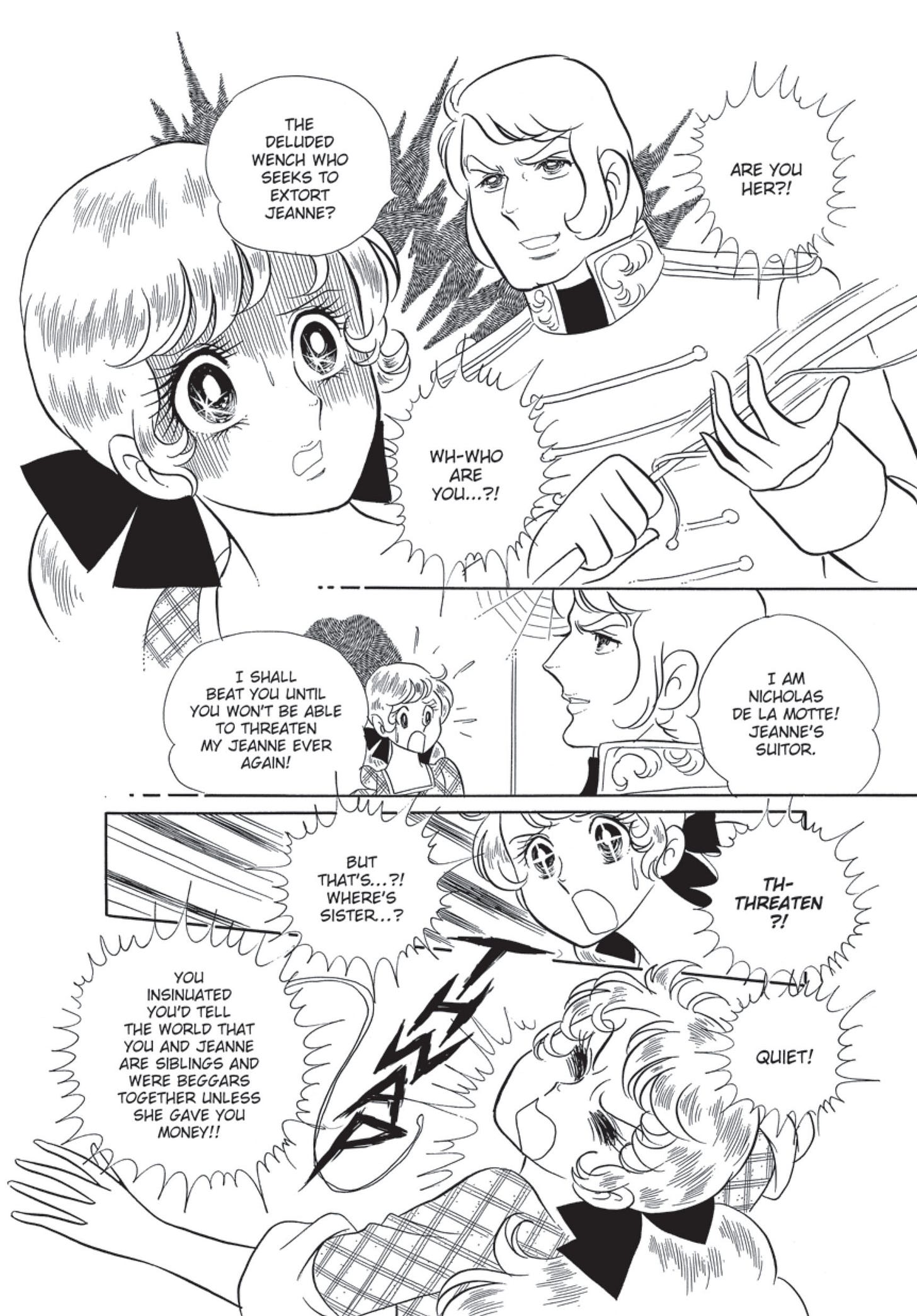
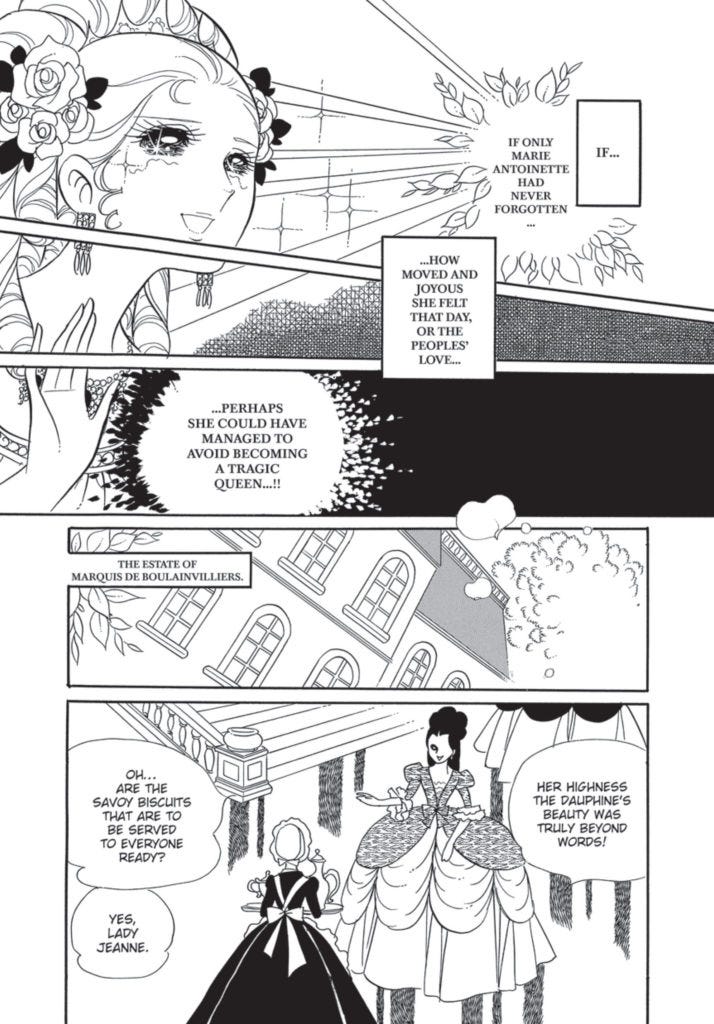
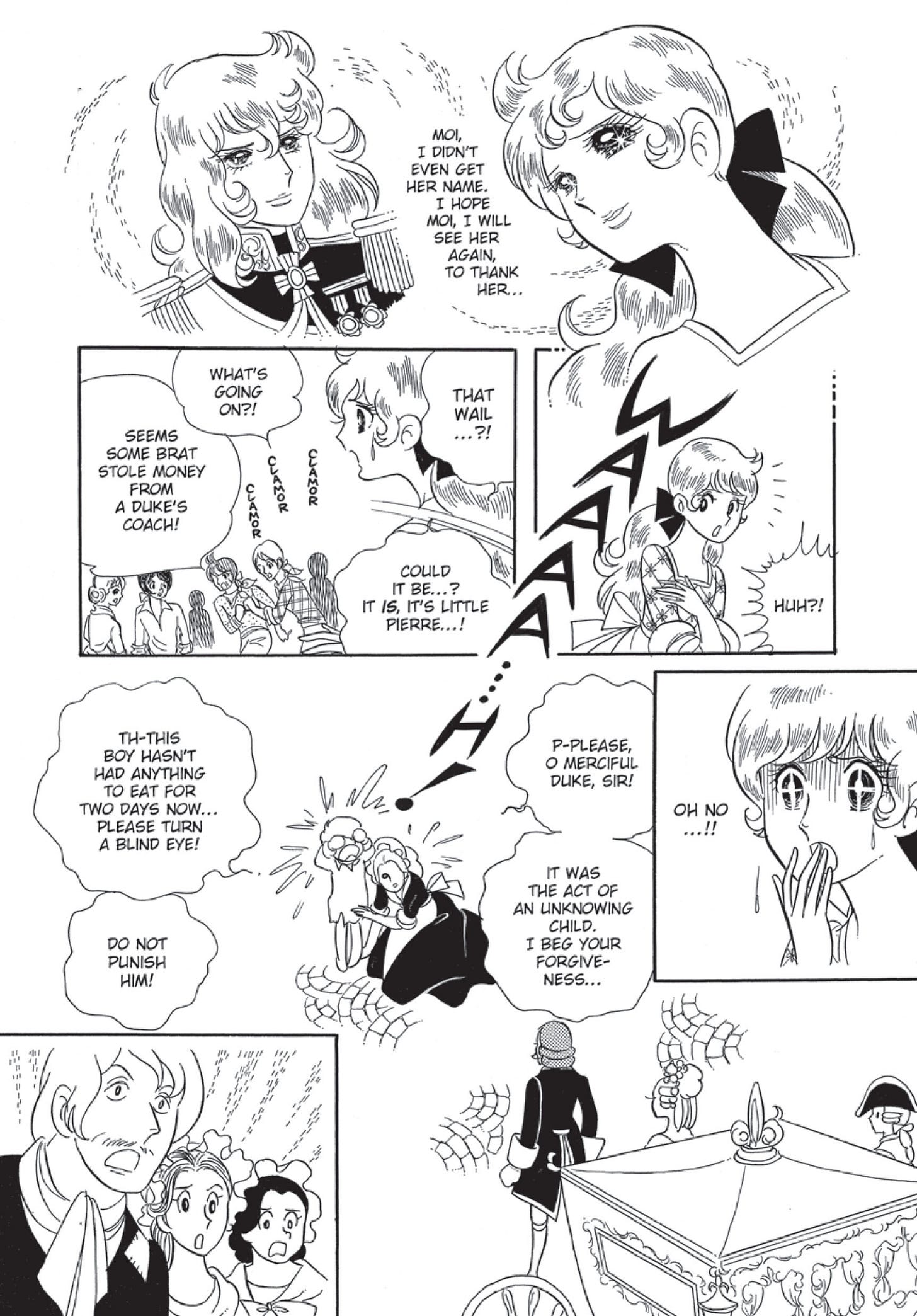
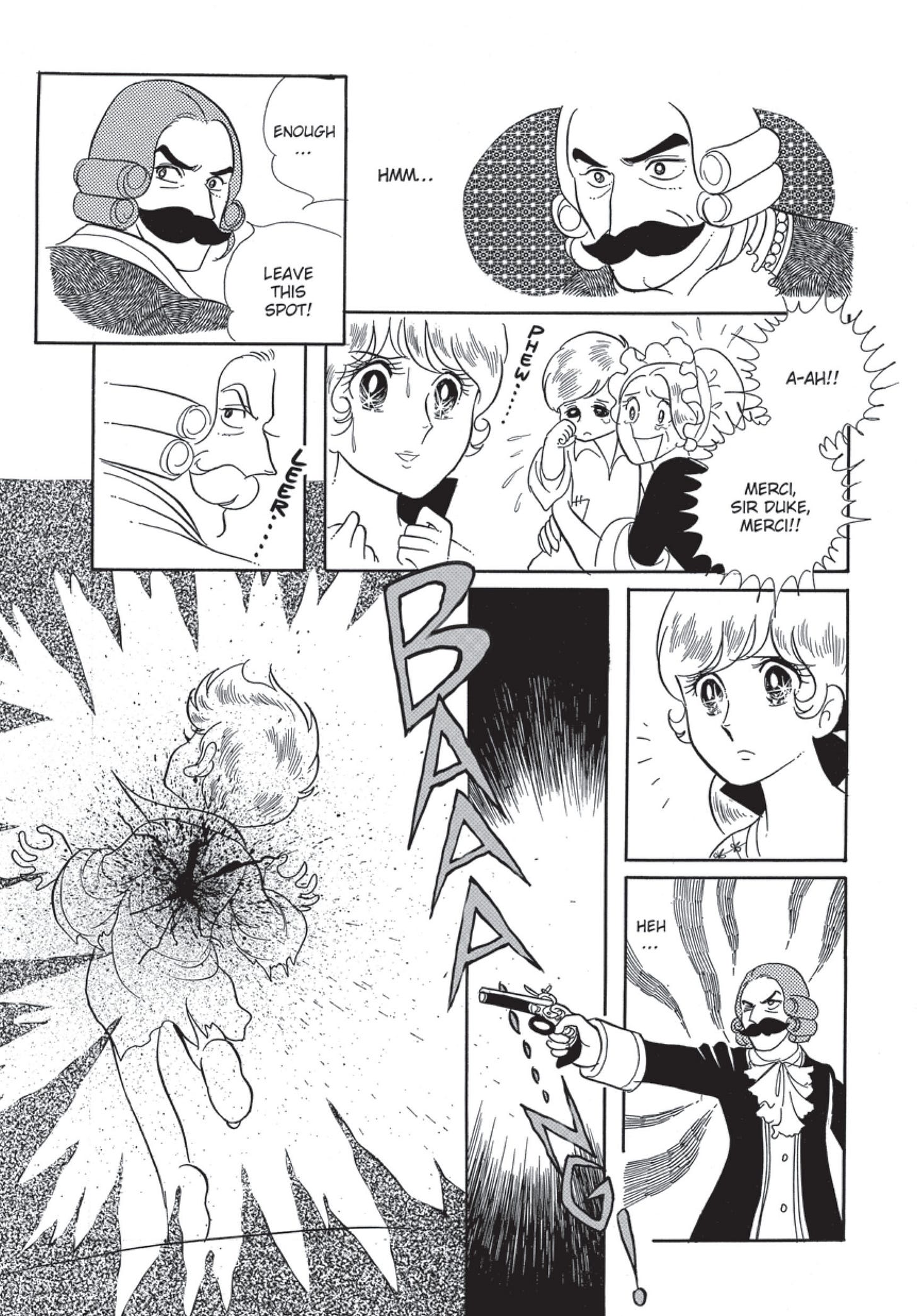
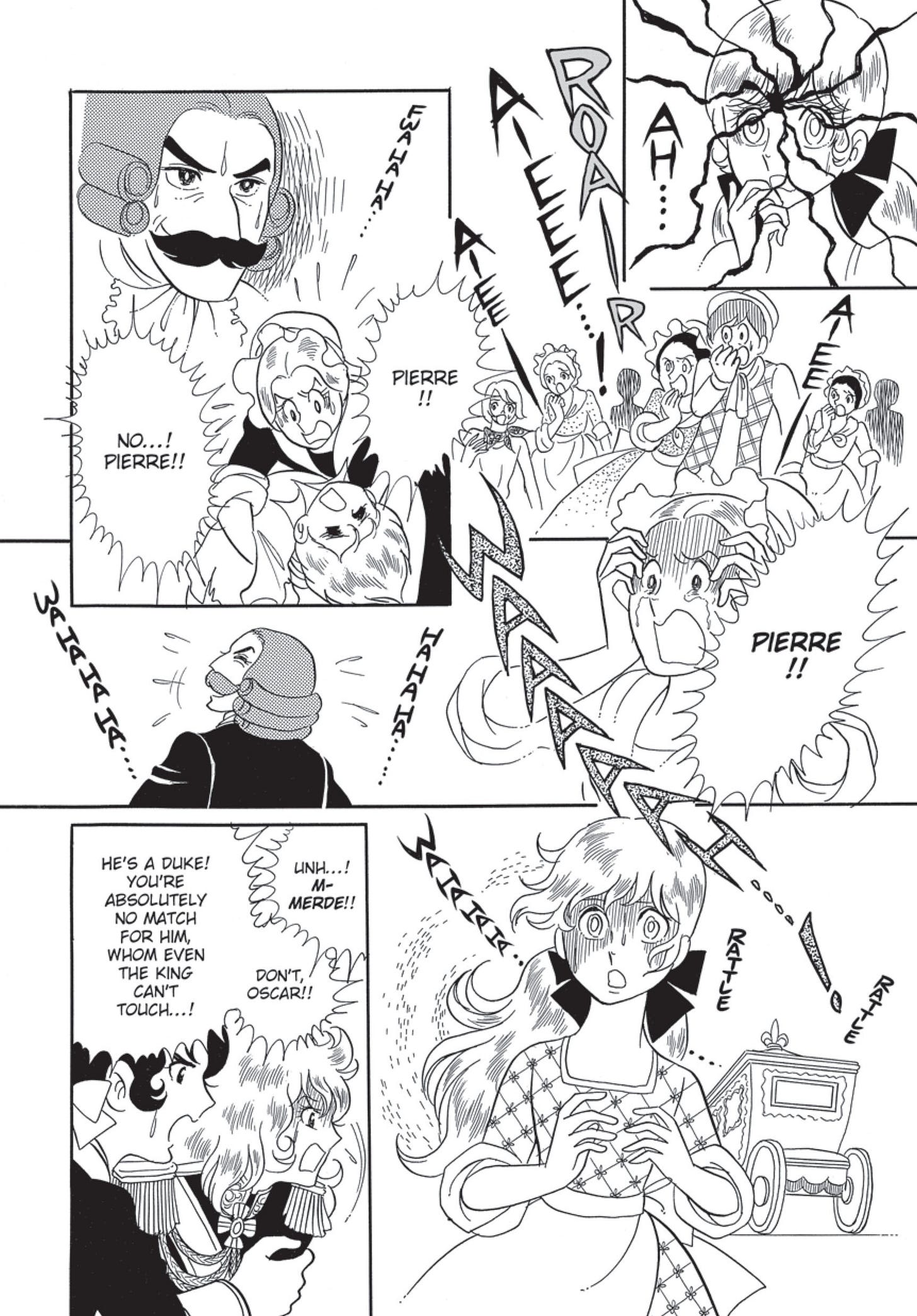
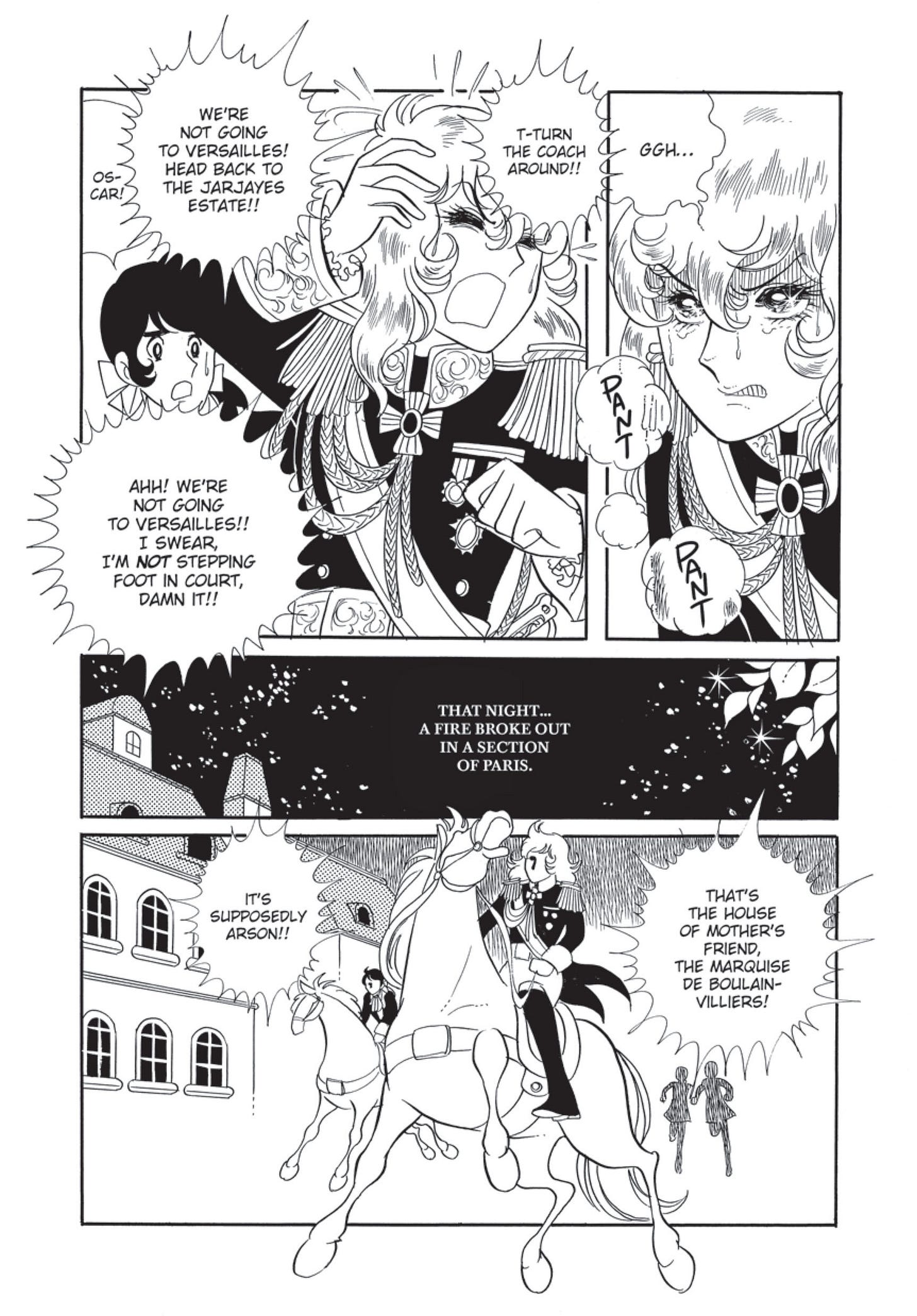
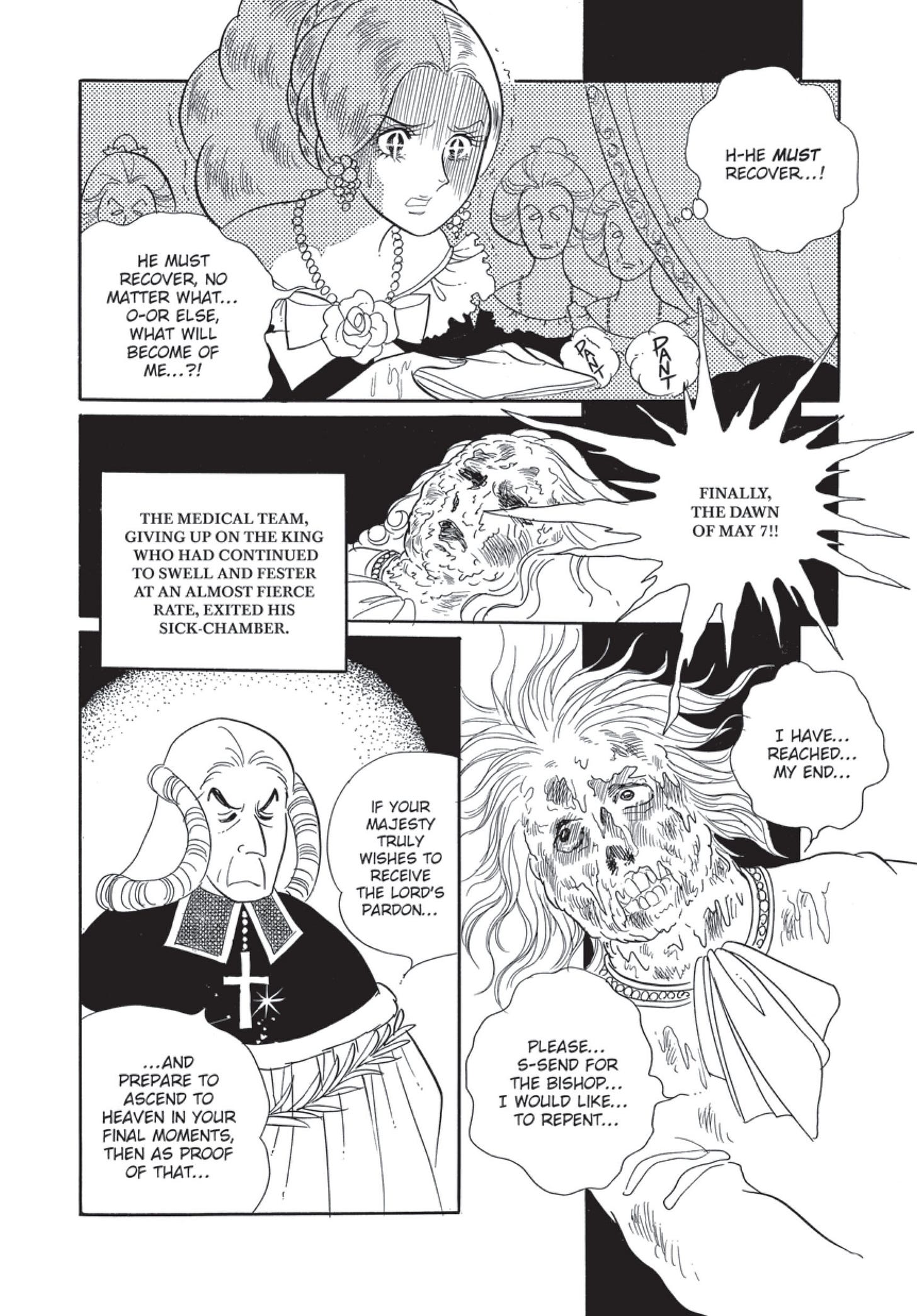
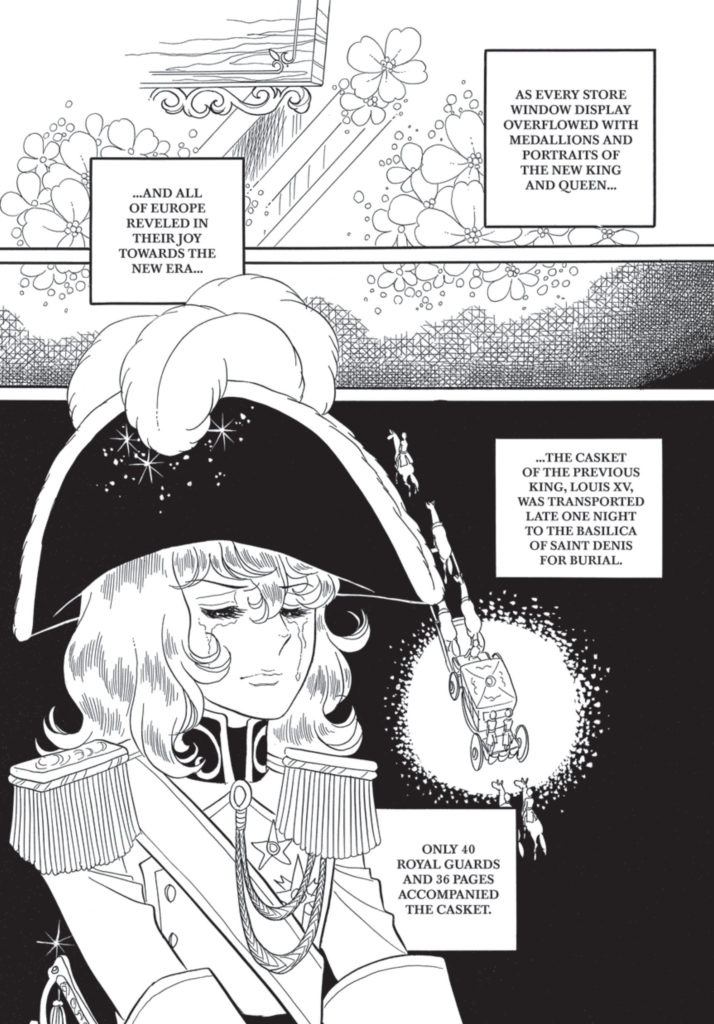
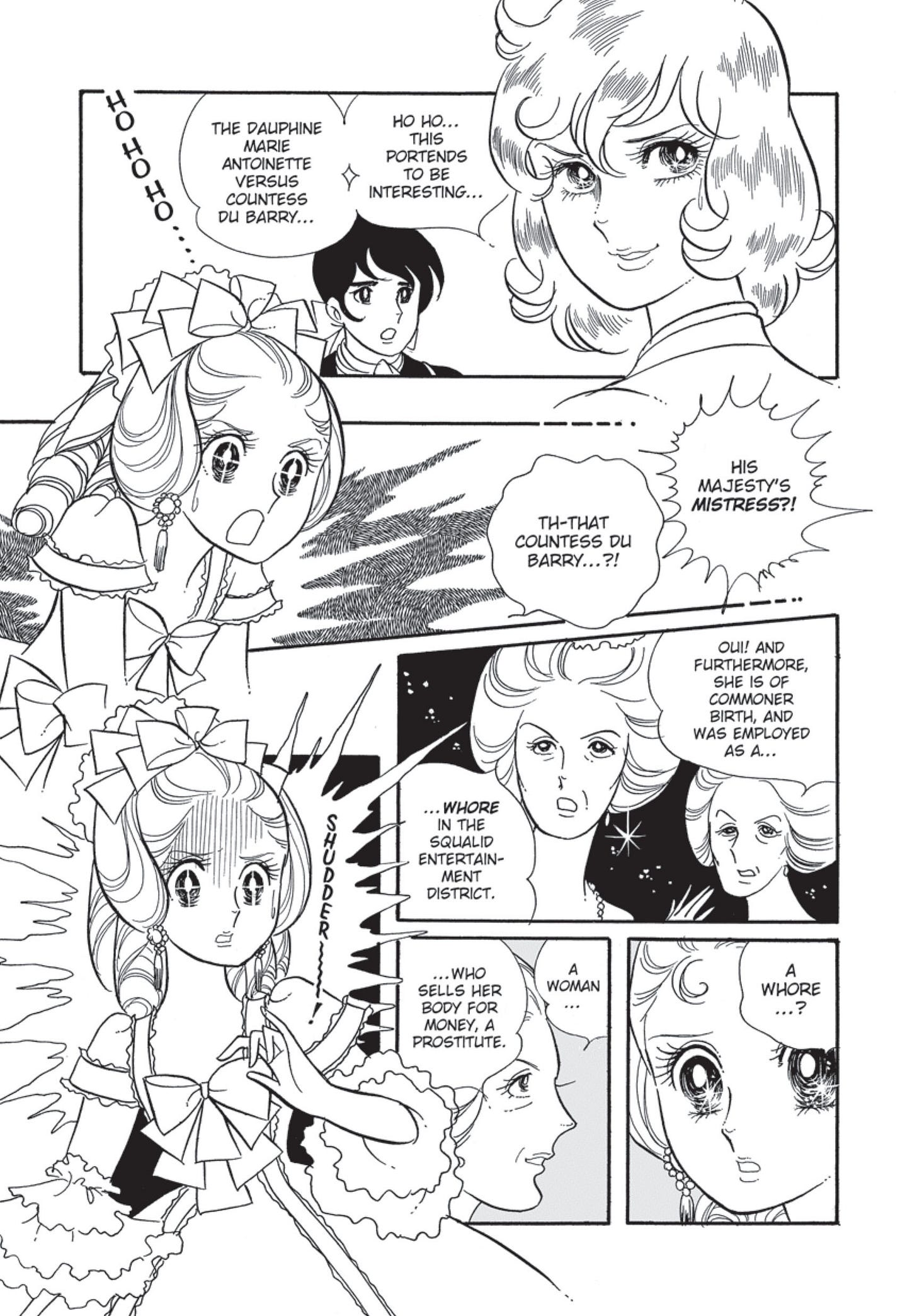
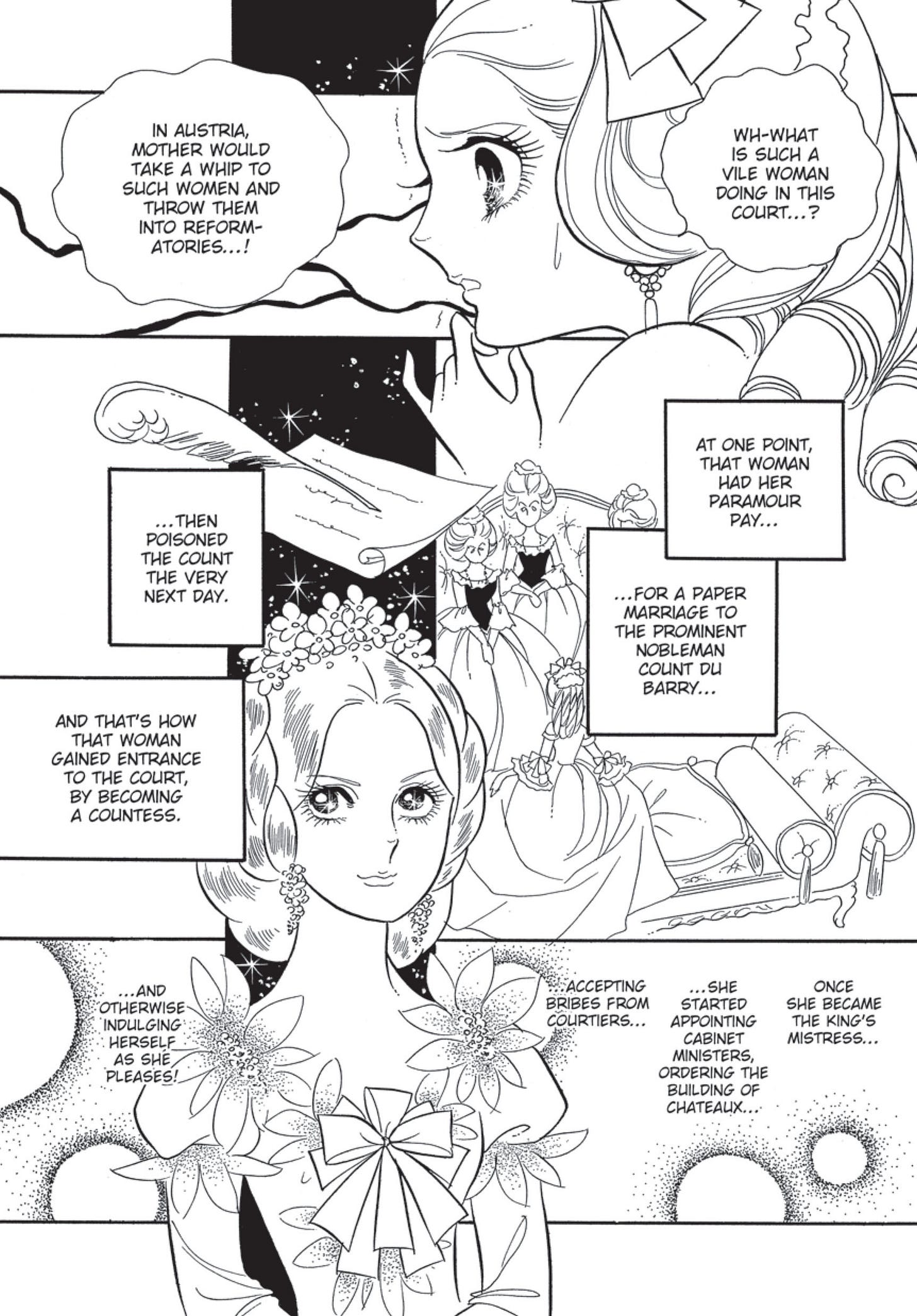
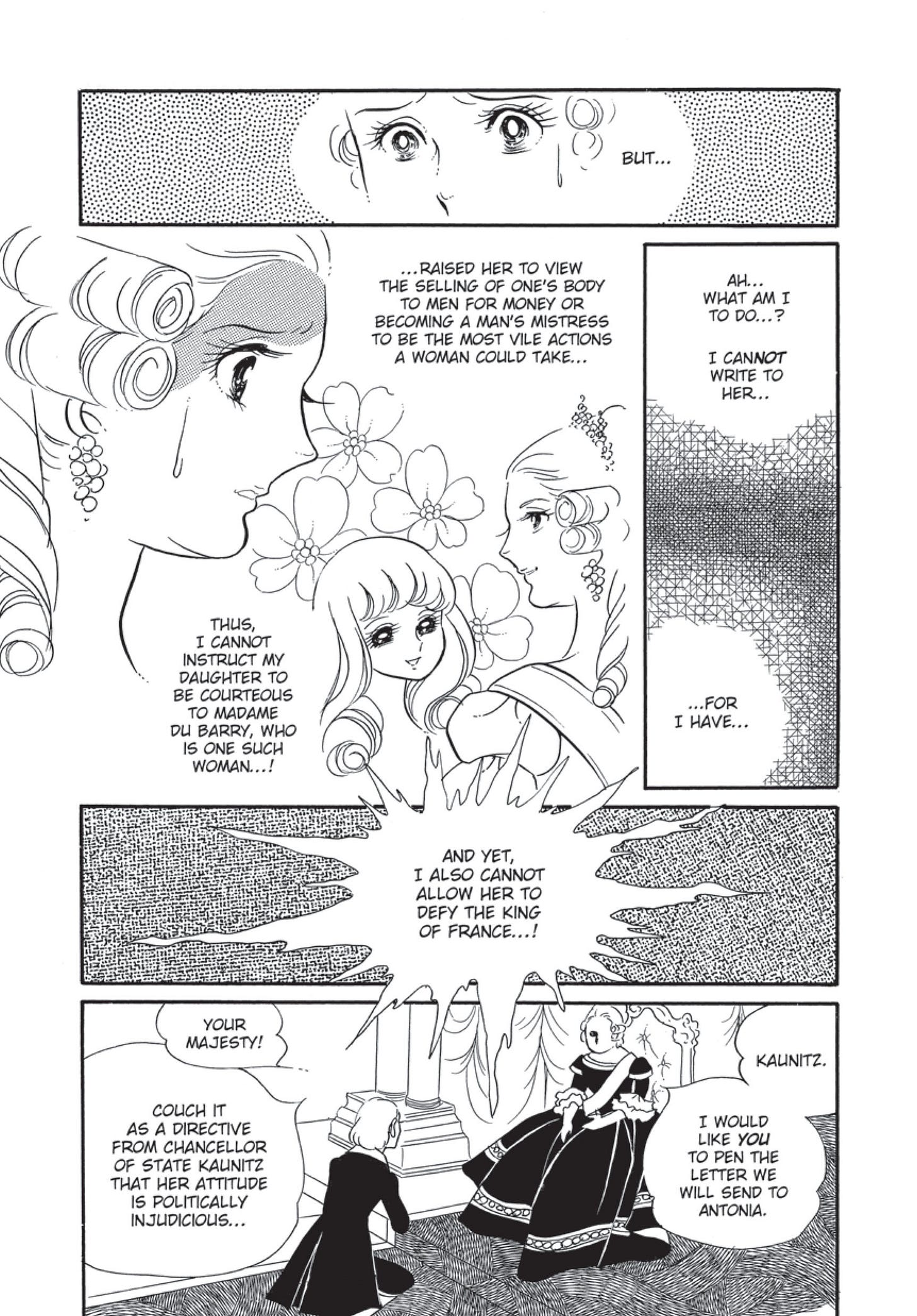
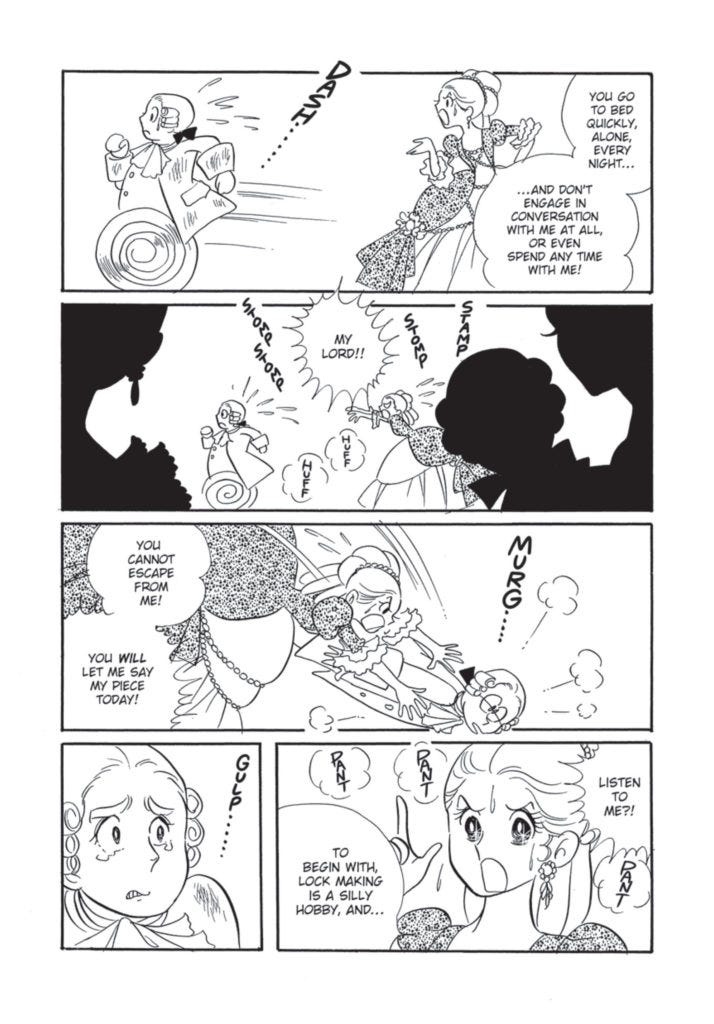
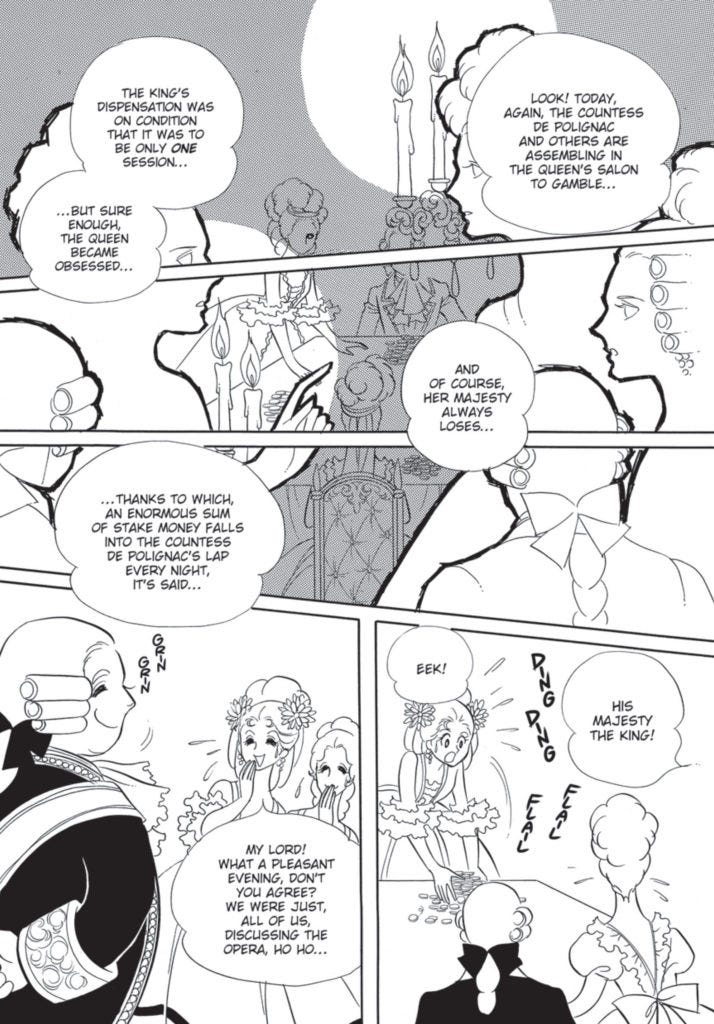
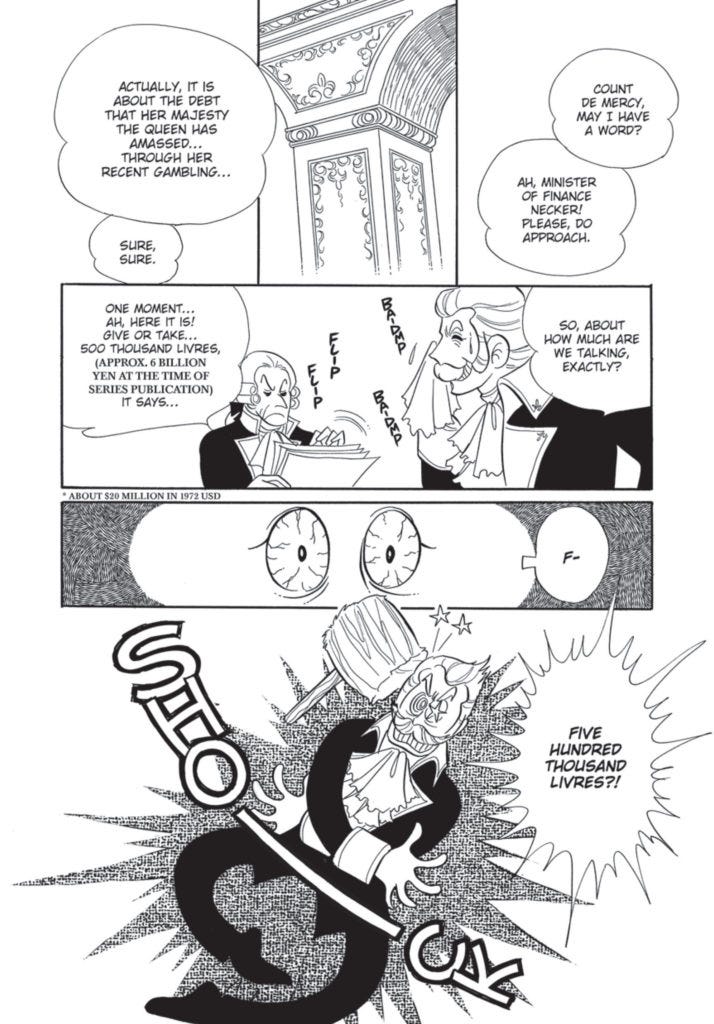
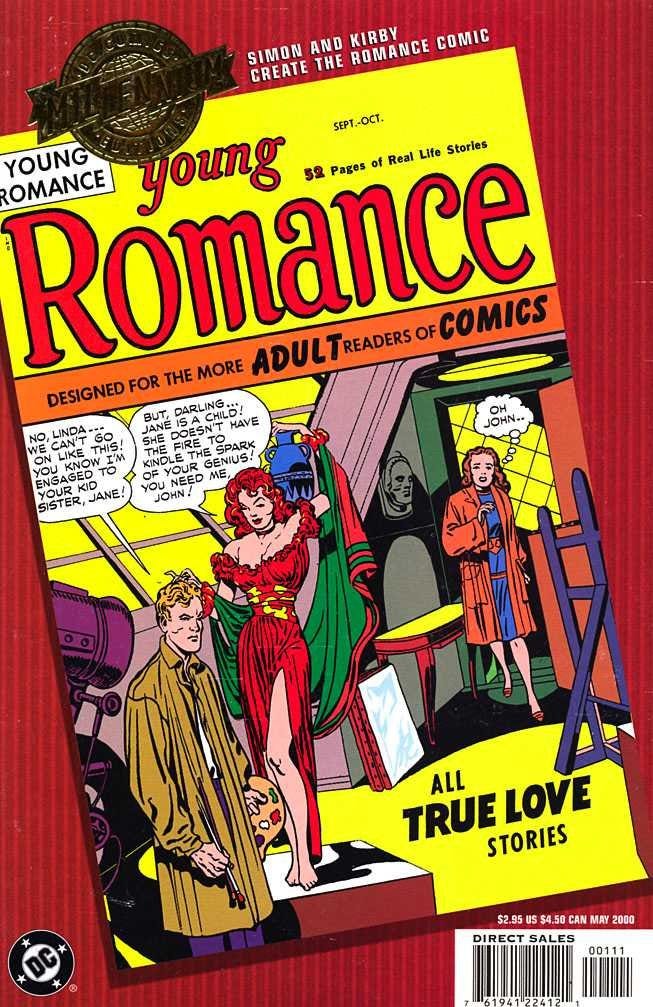
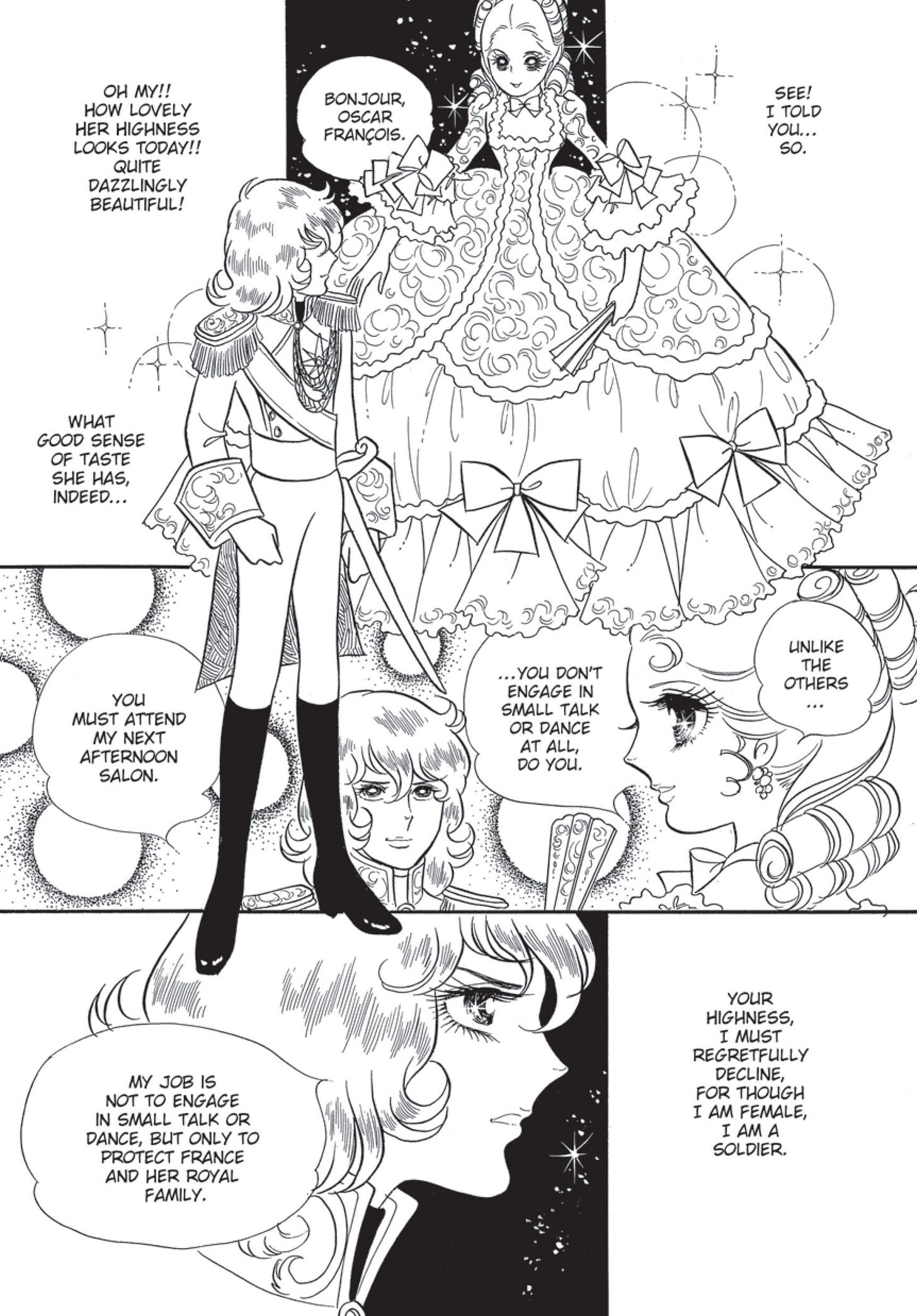
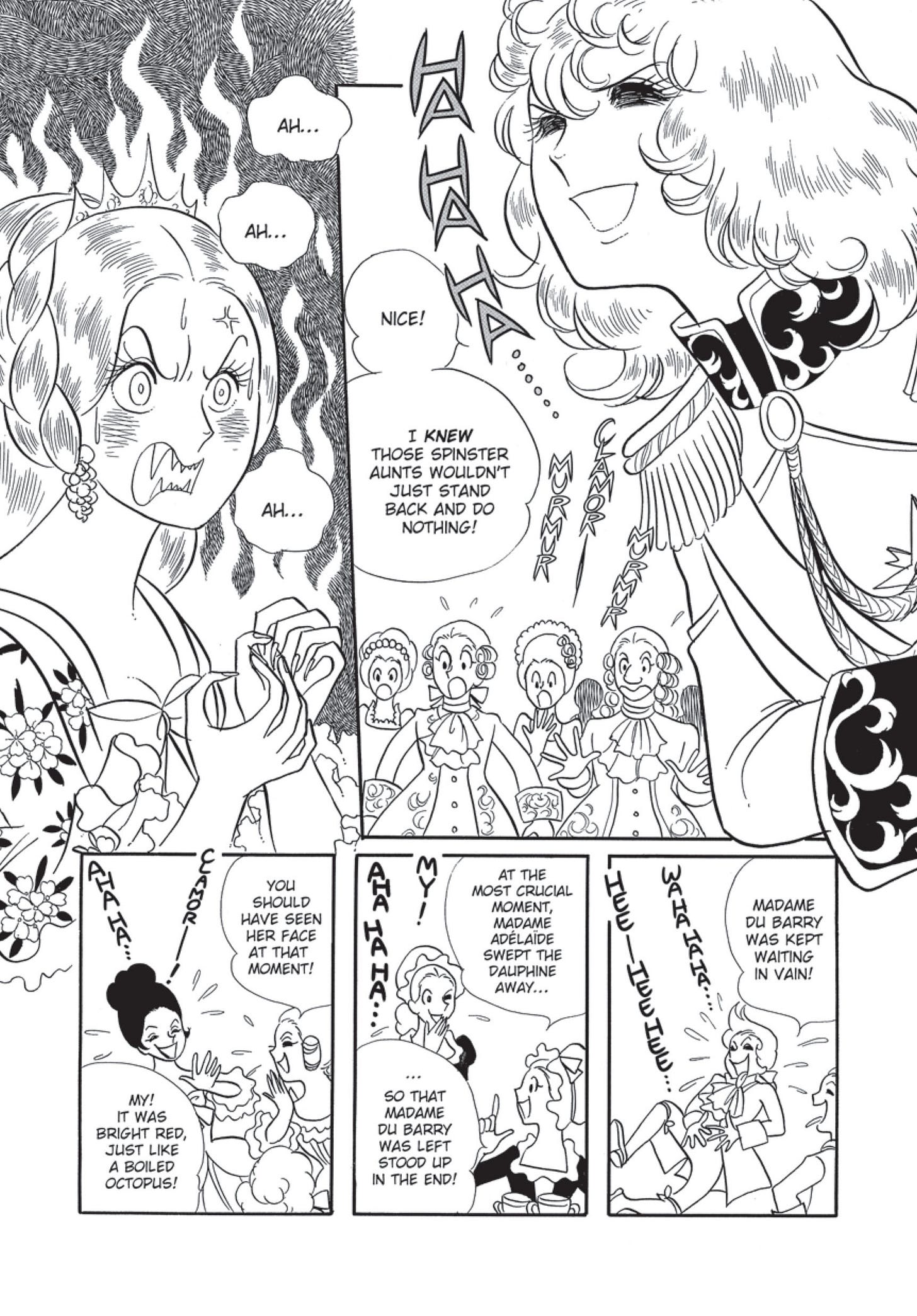
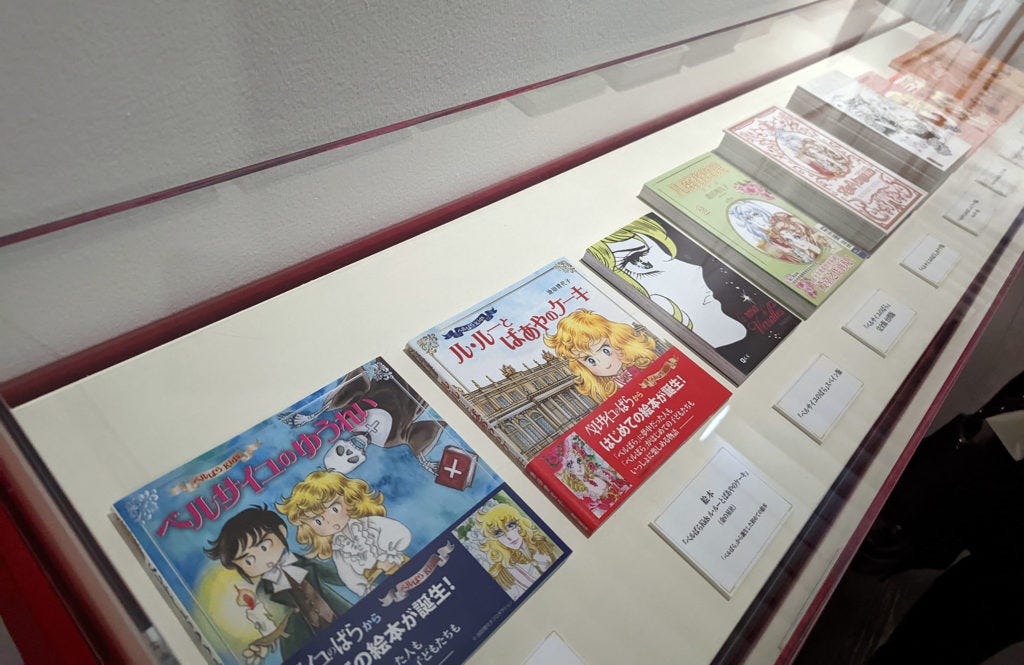
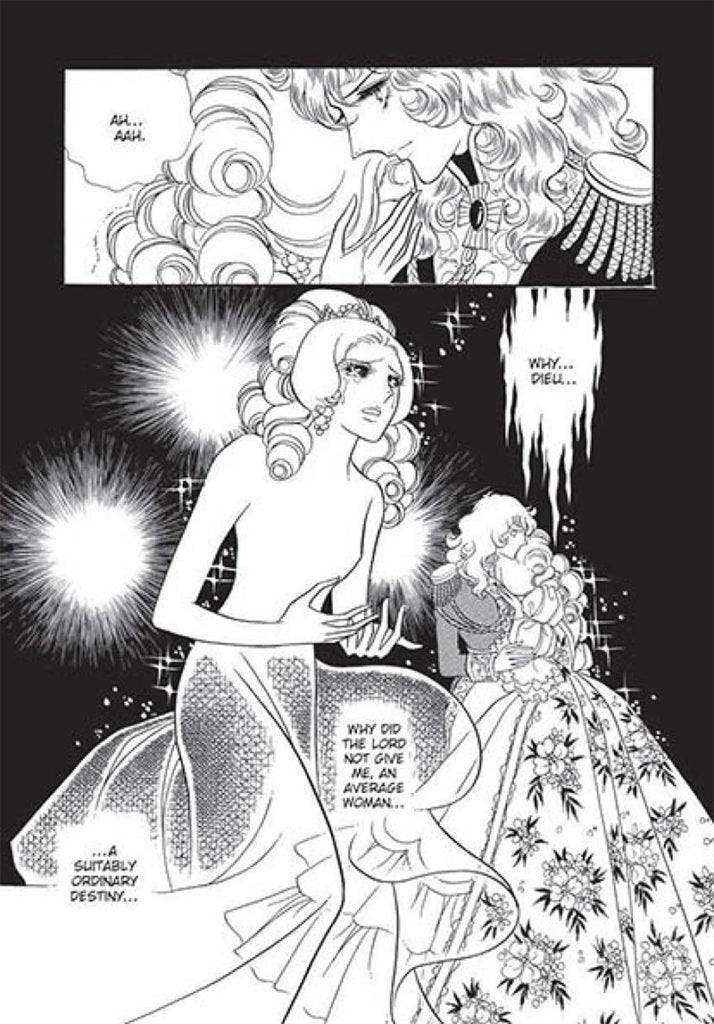
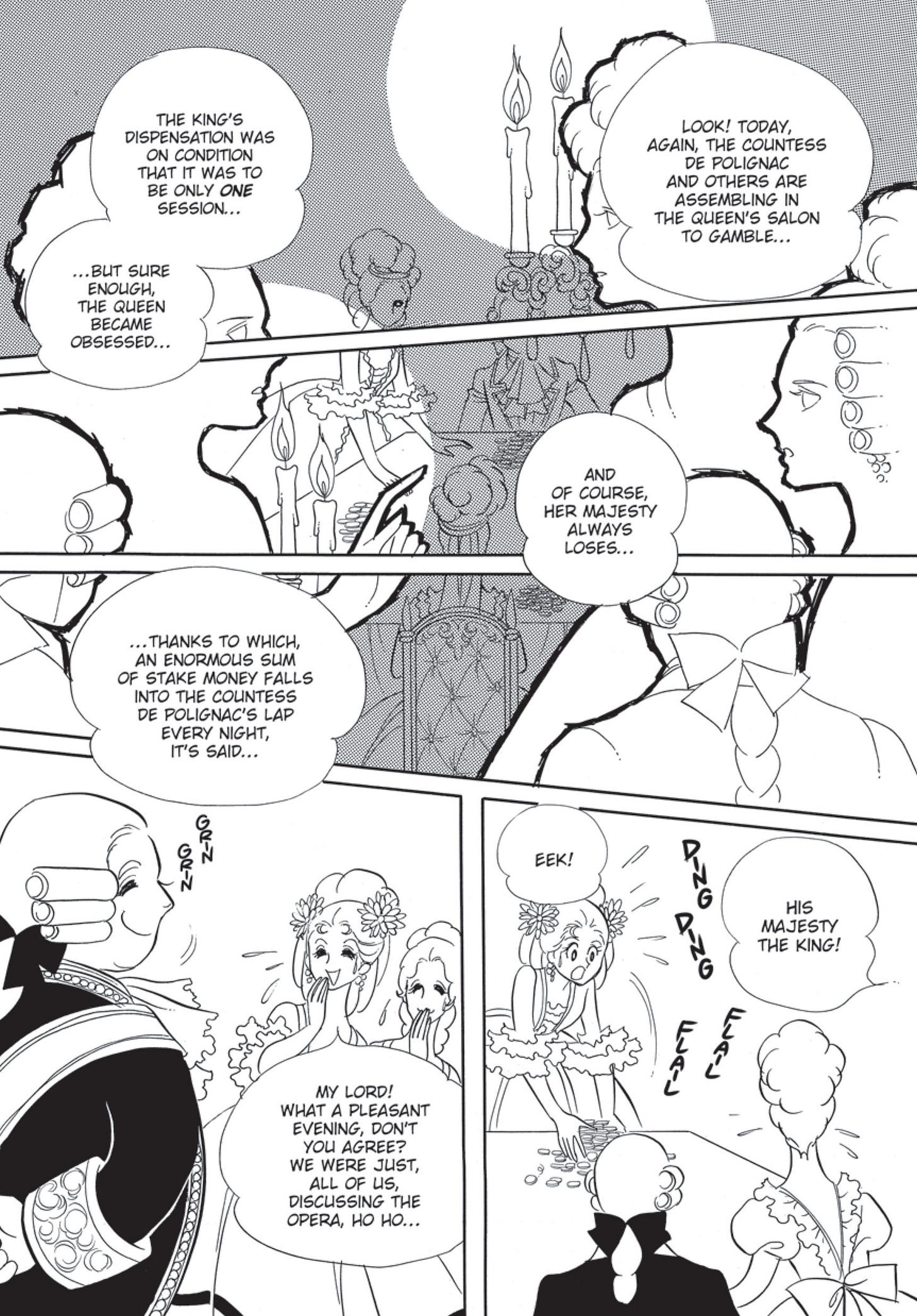
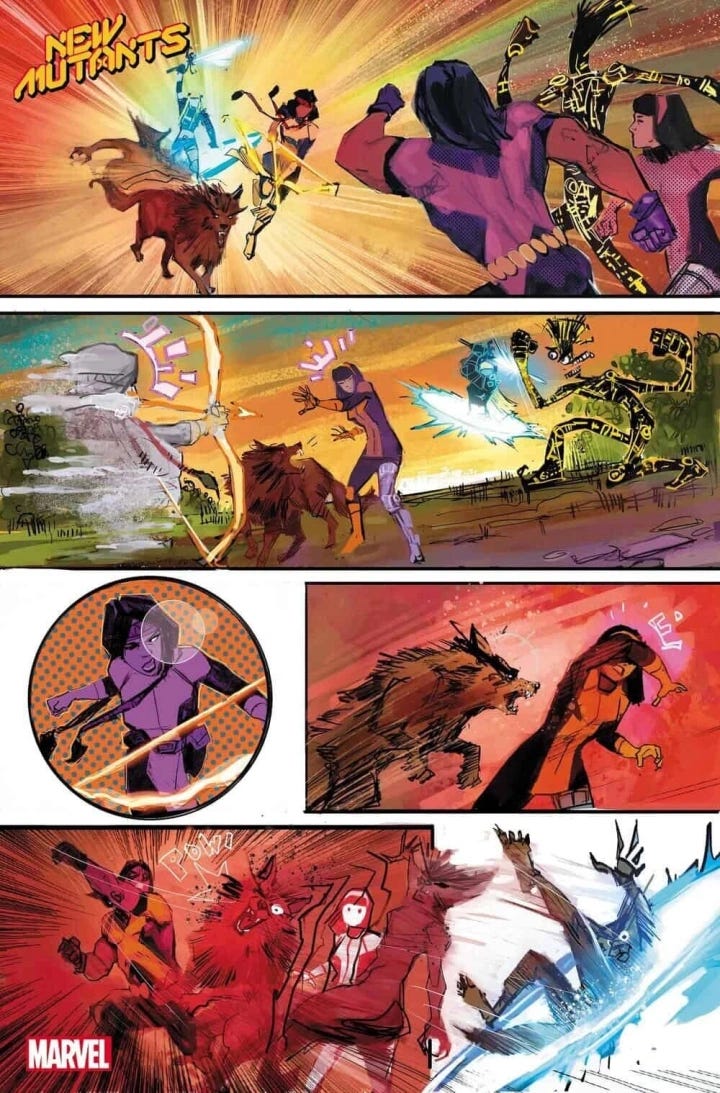
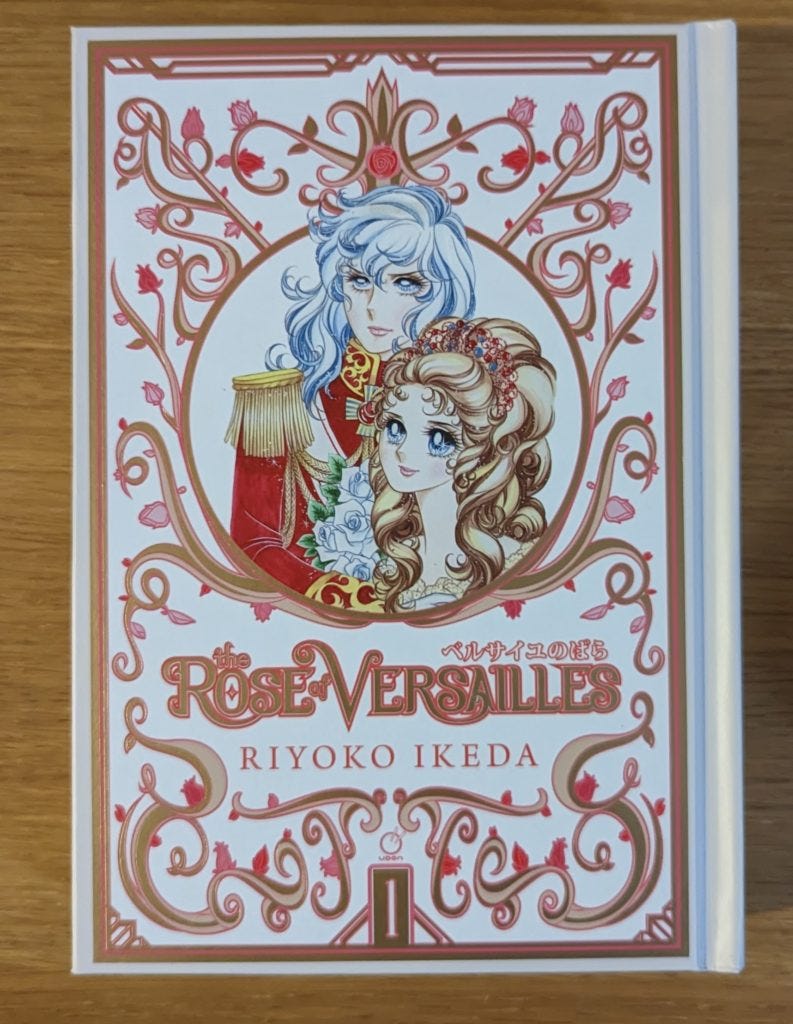
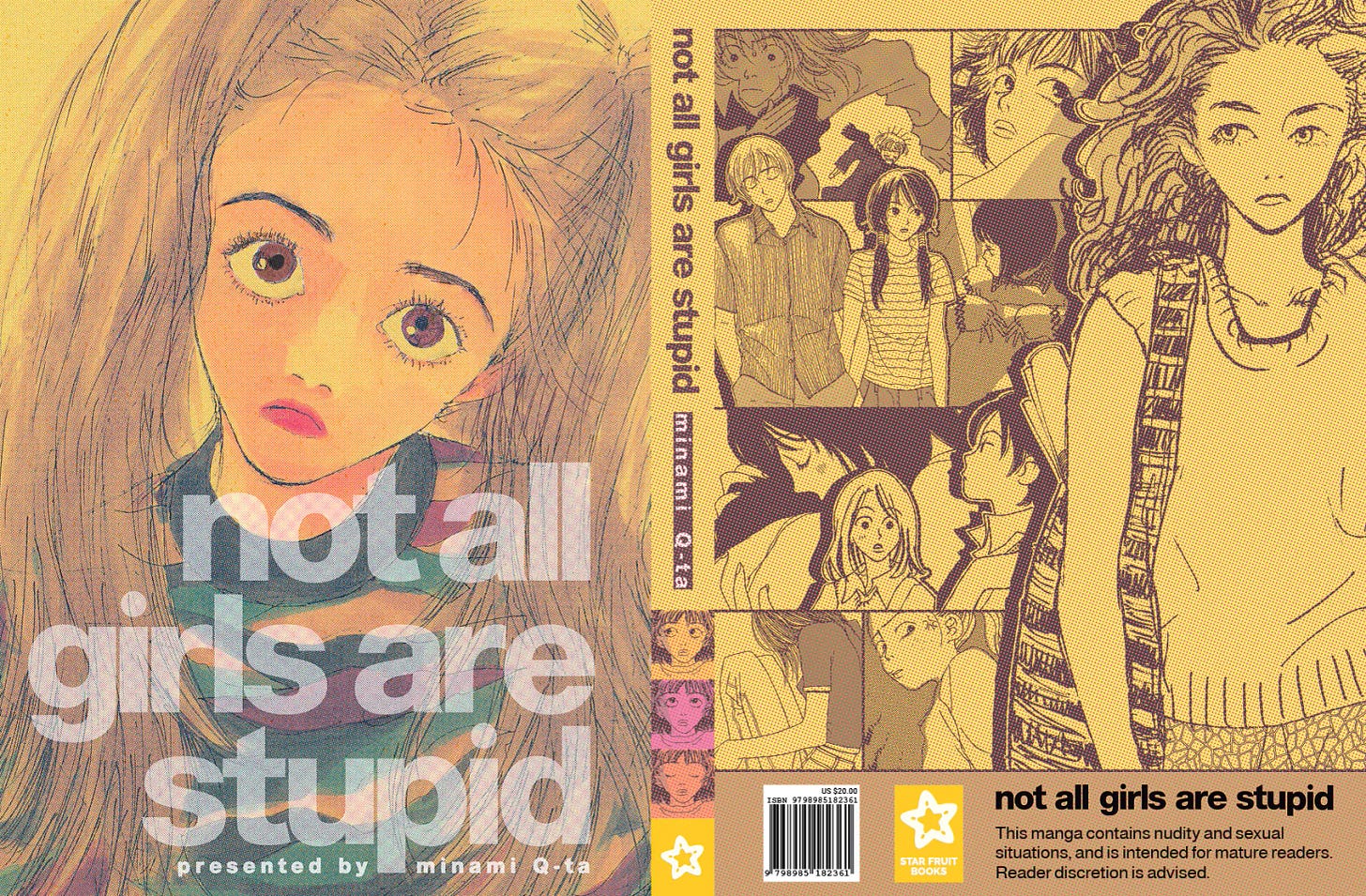
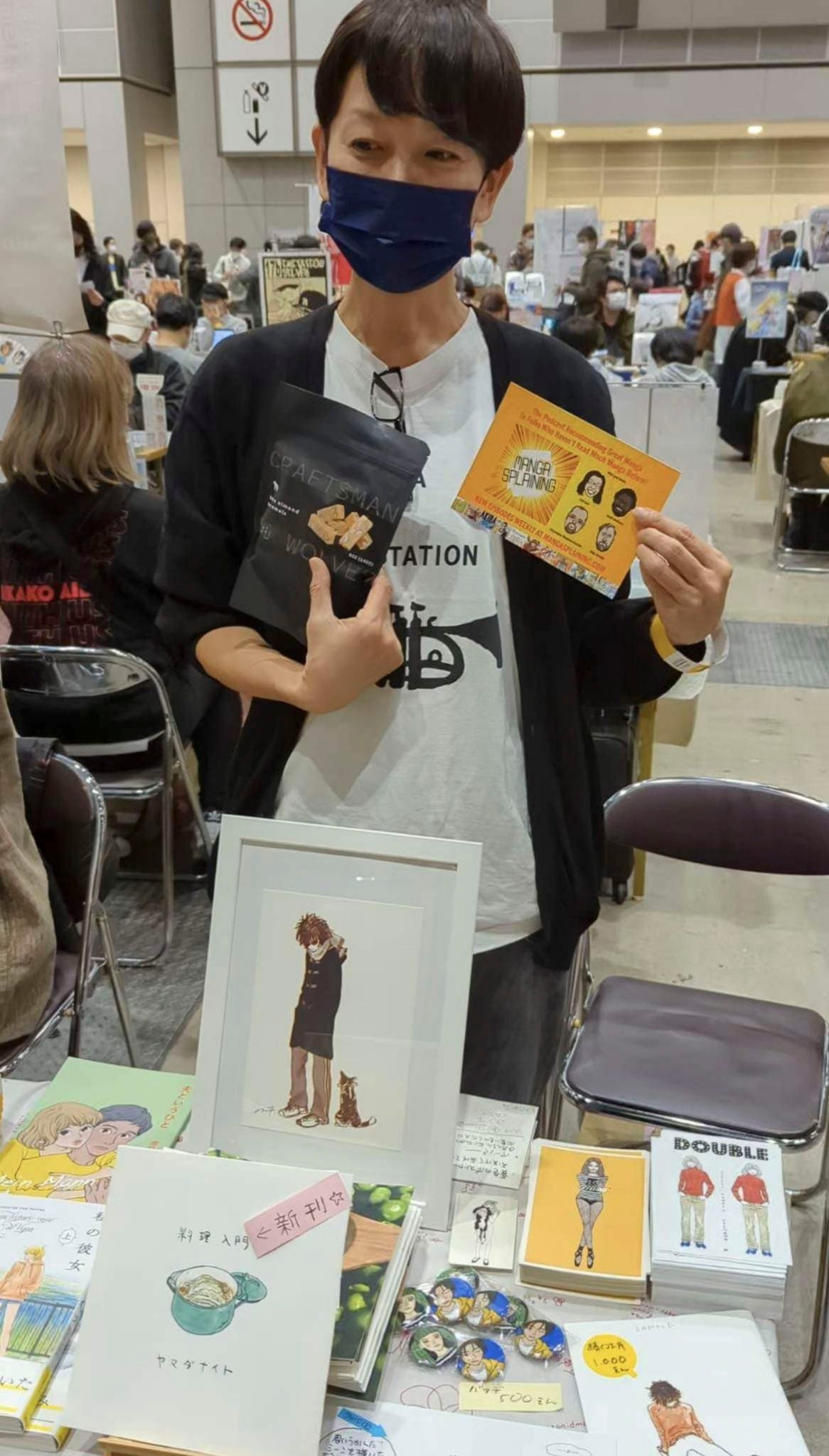

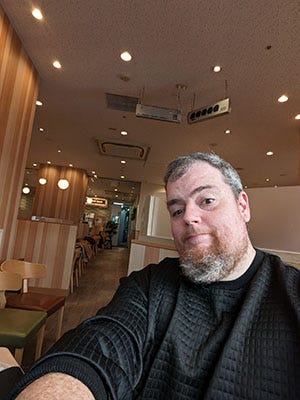
Beautiful artsyle held back by trash Culturally Marxist writing.
Fascinating. I had no idea that a Versailles-related manga was such a pop culture phenomenon in Japan. Thanks for the education!